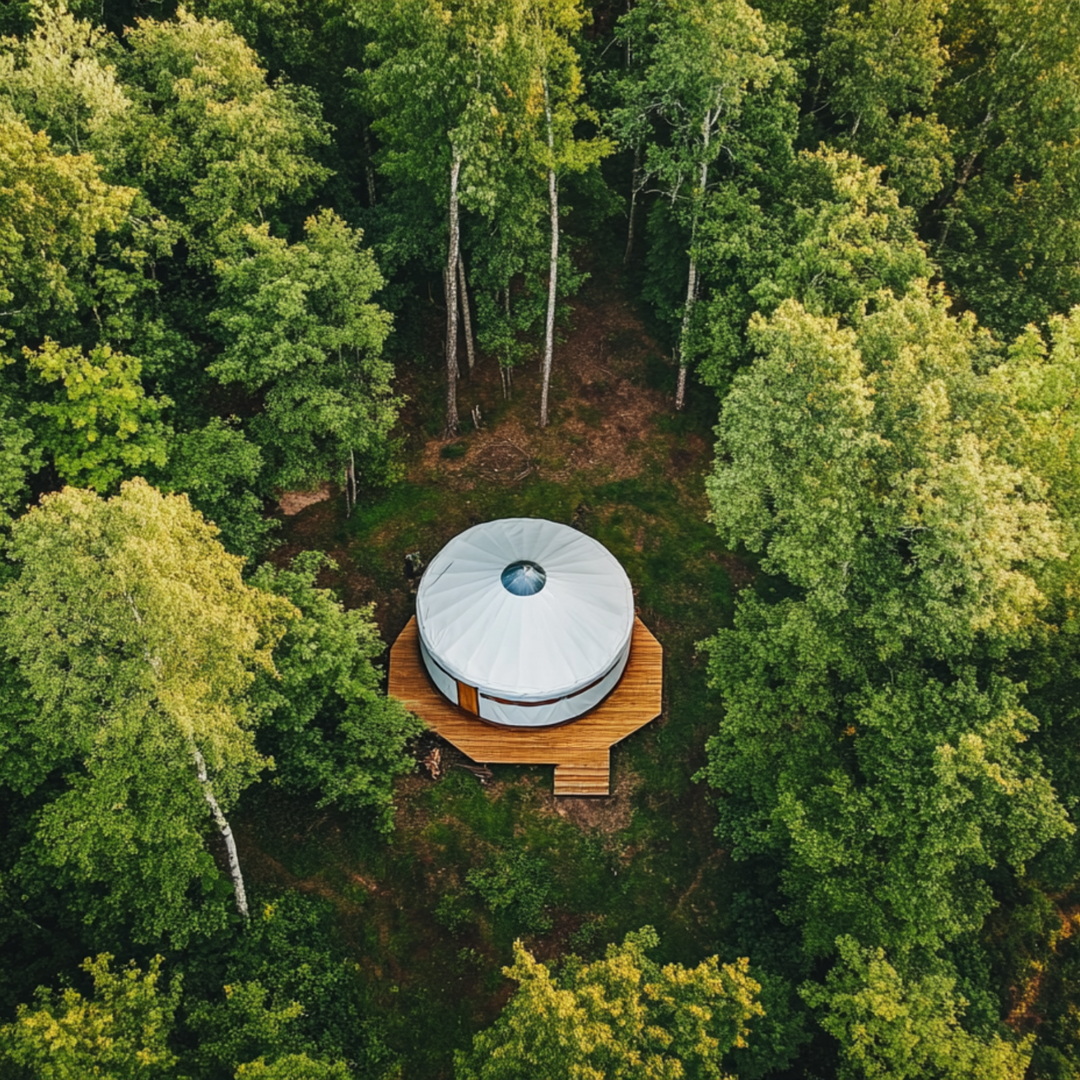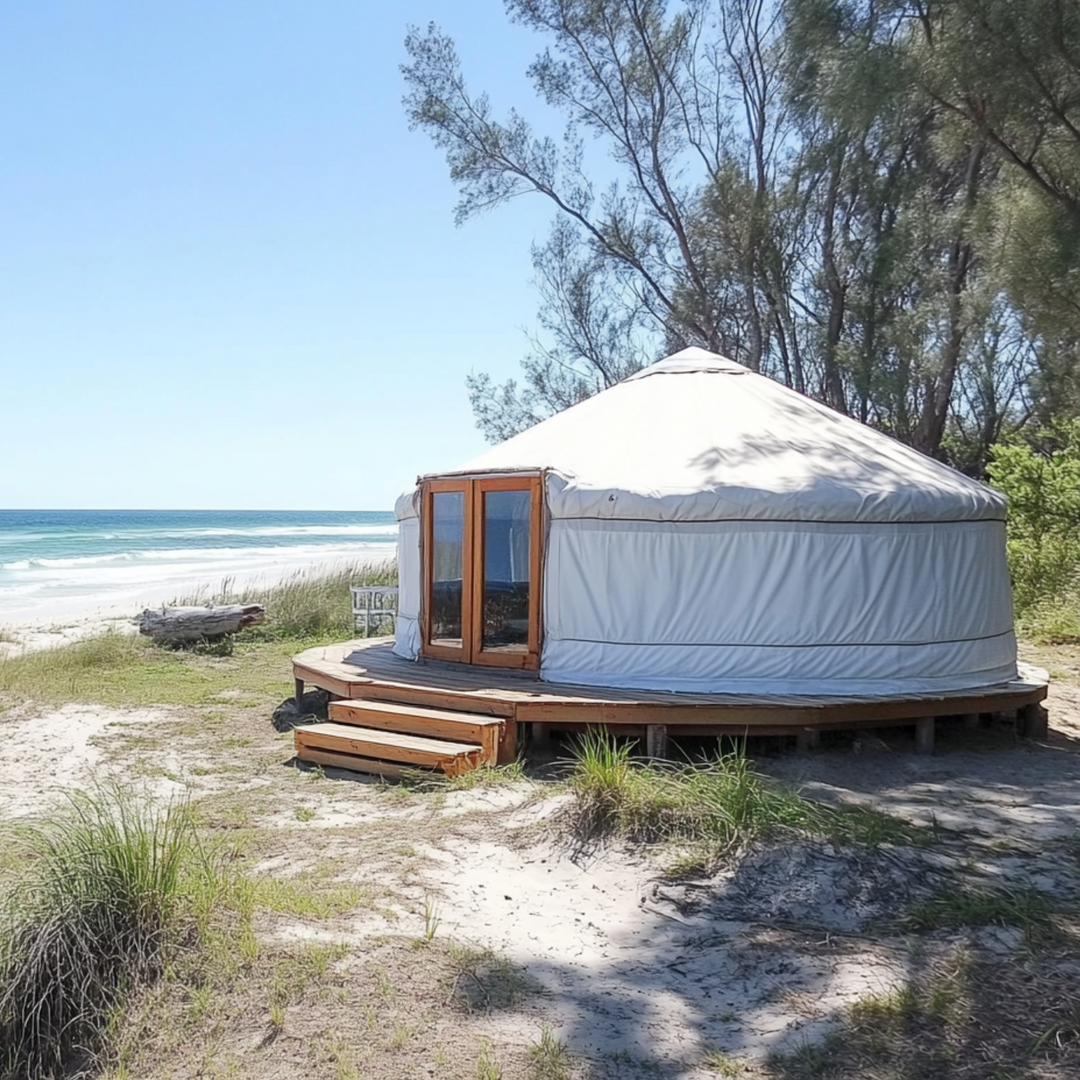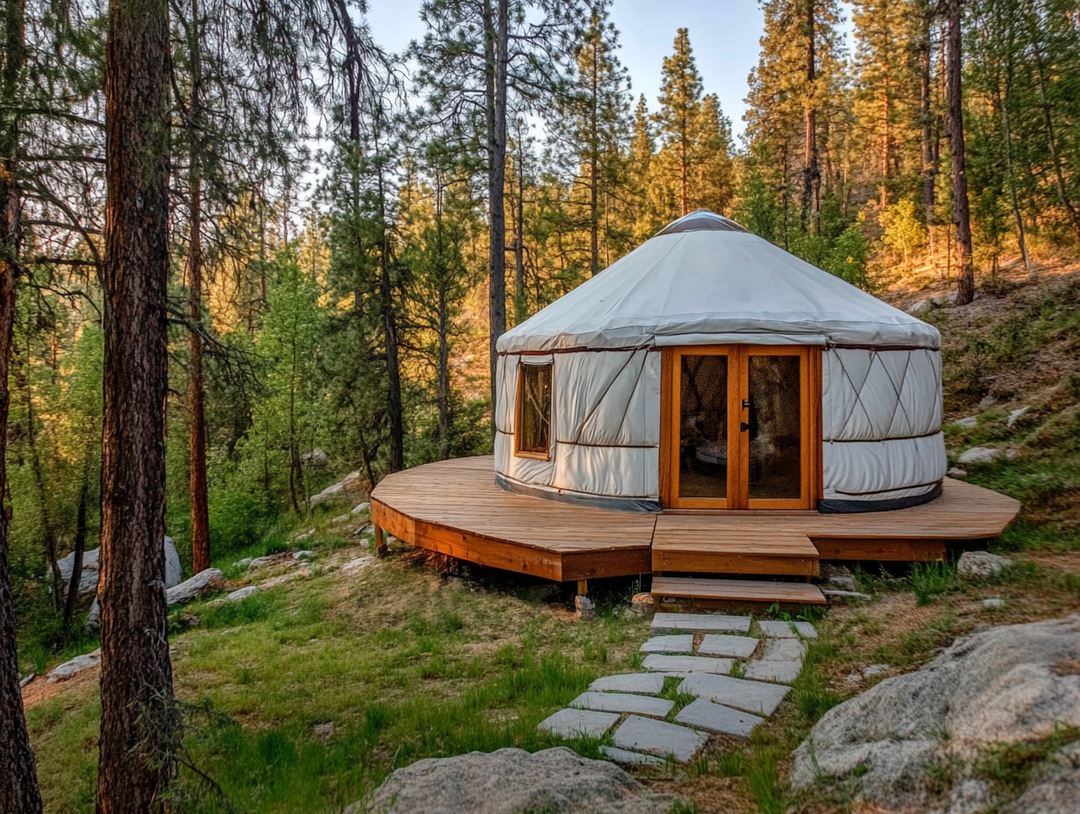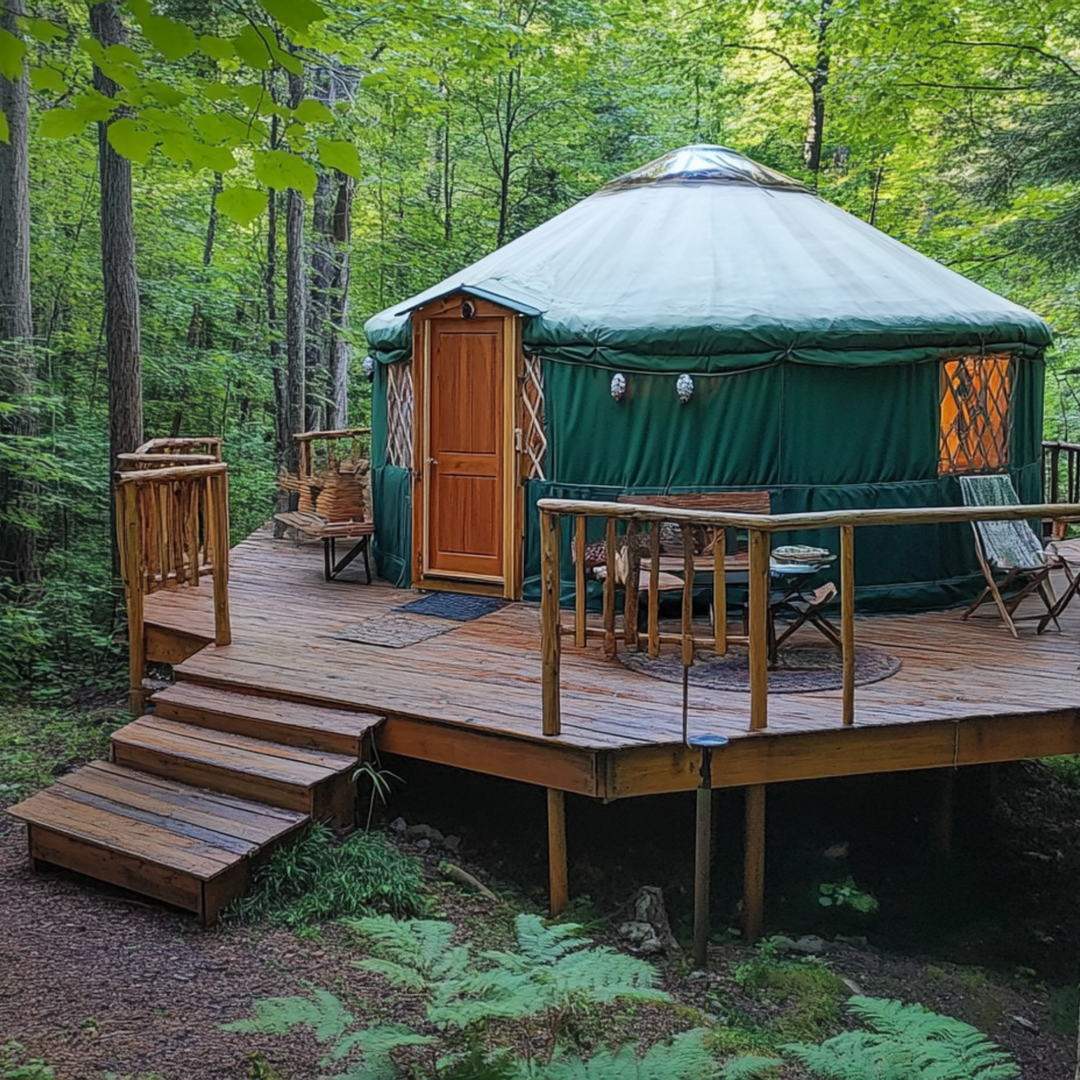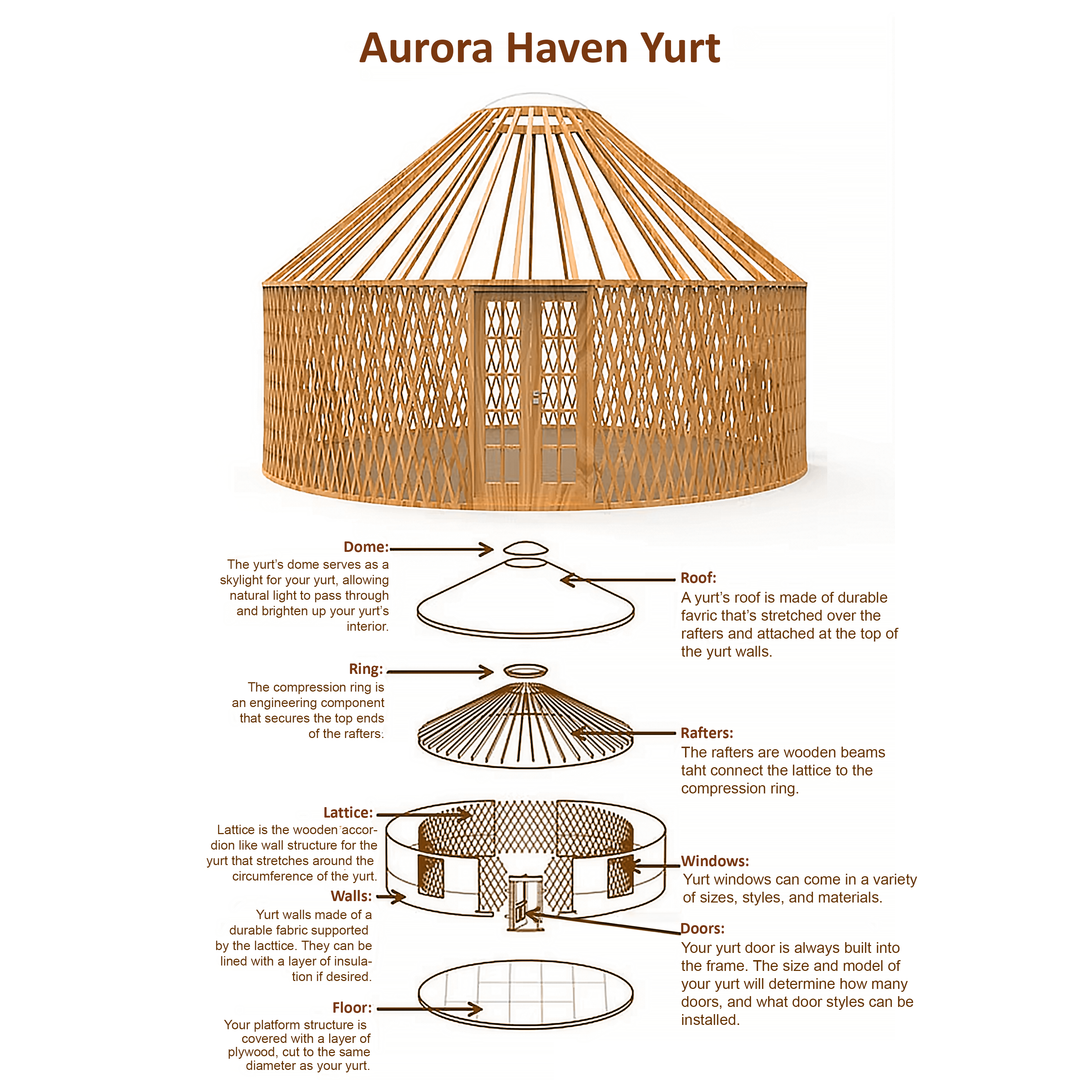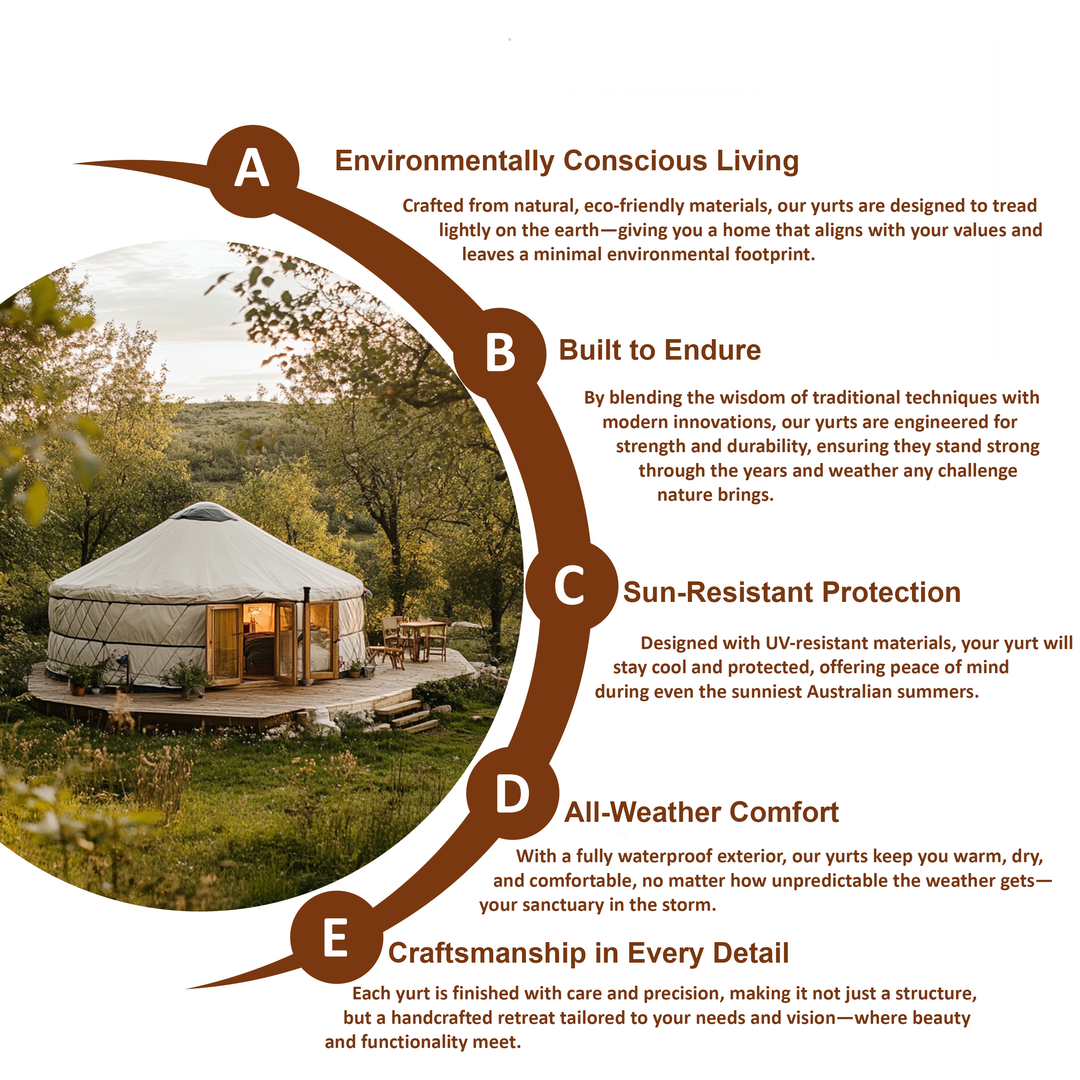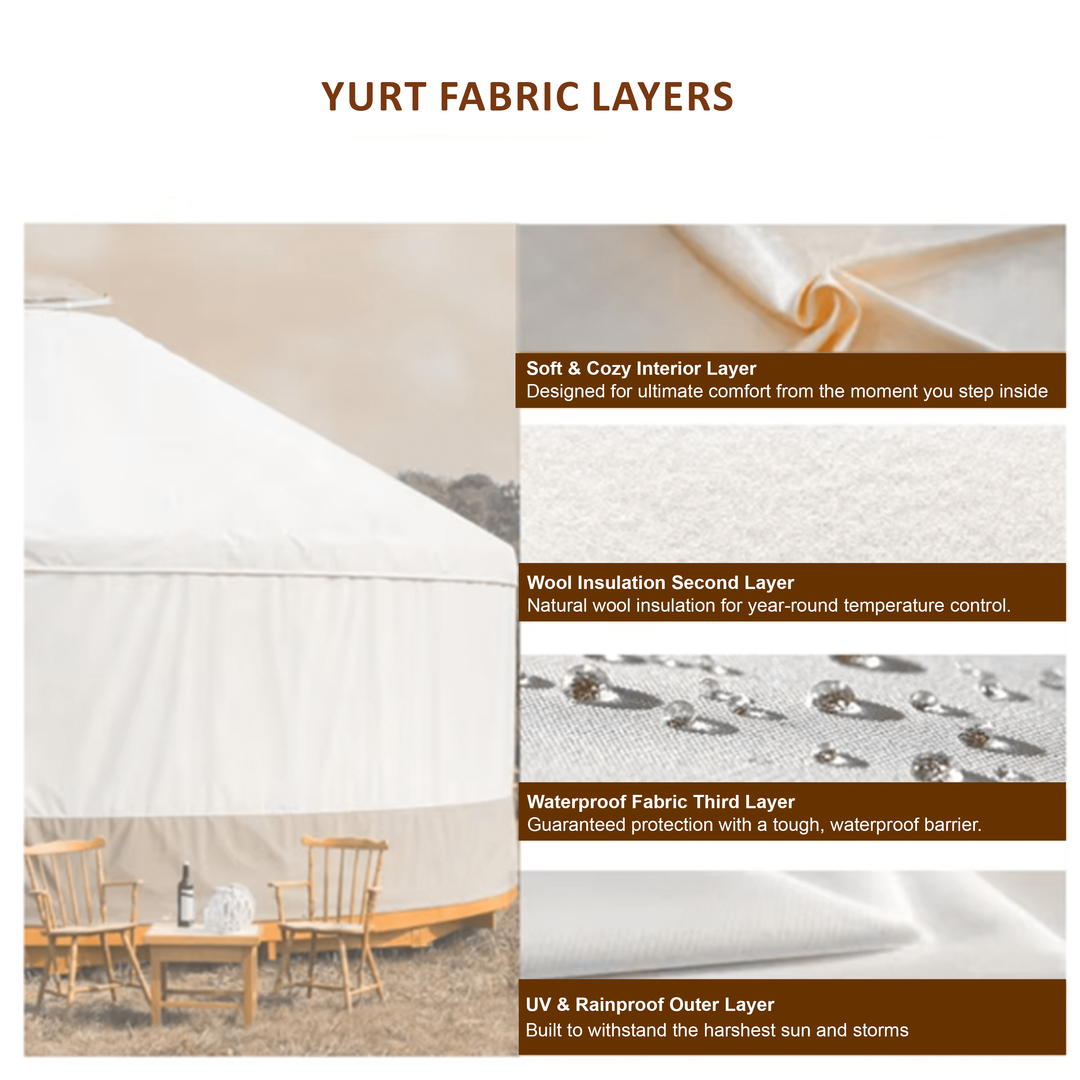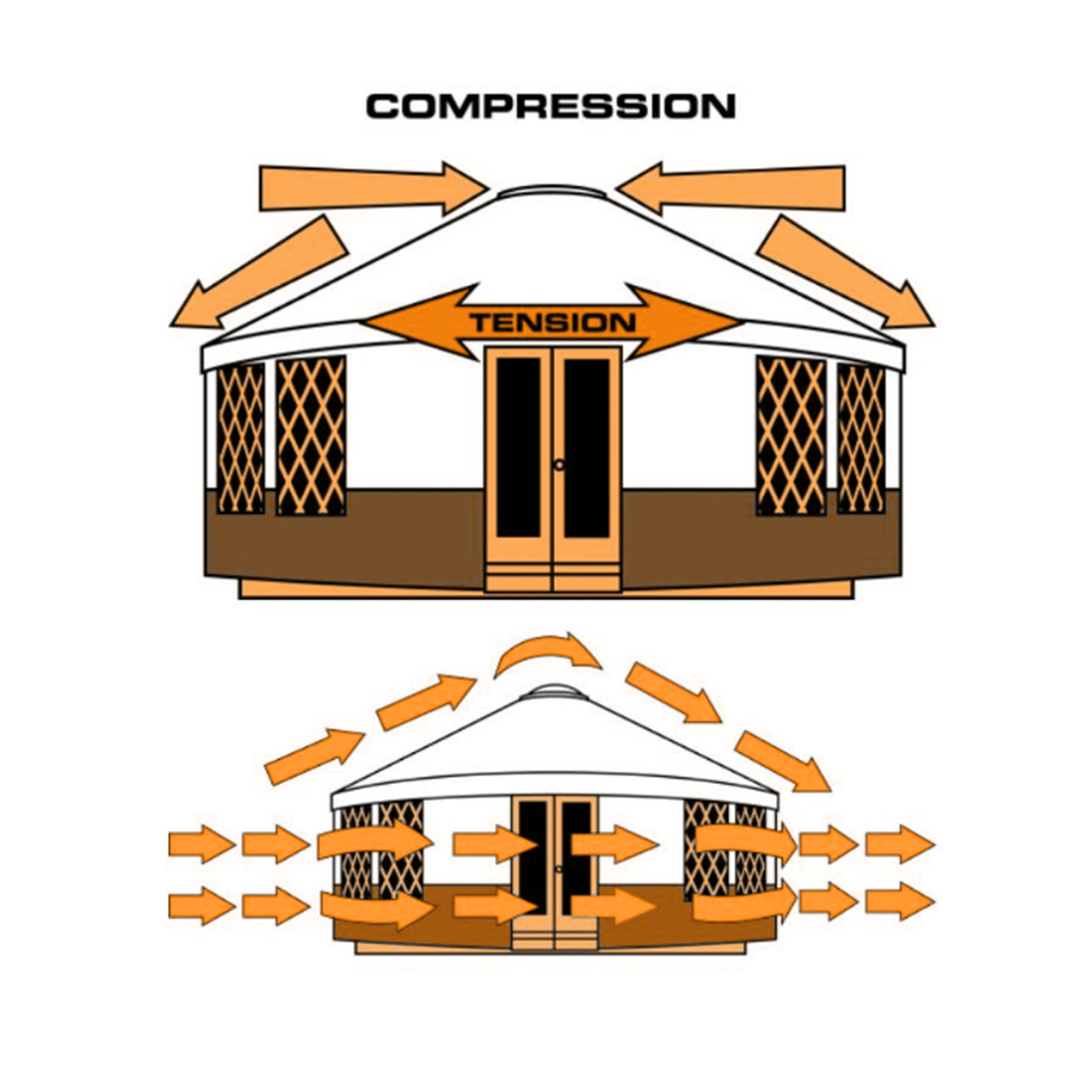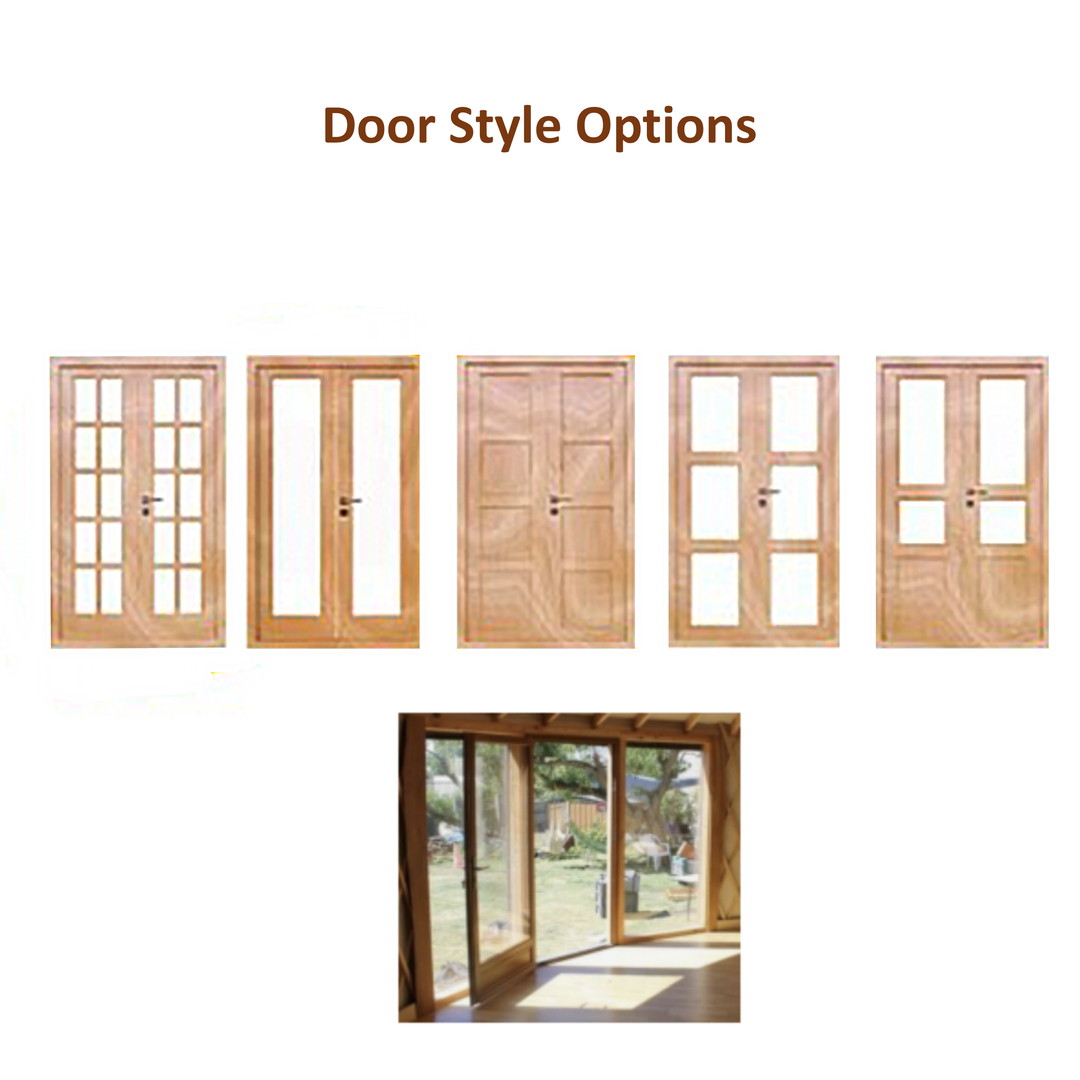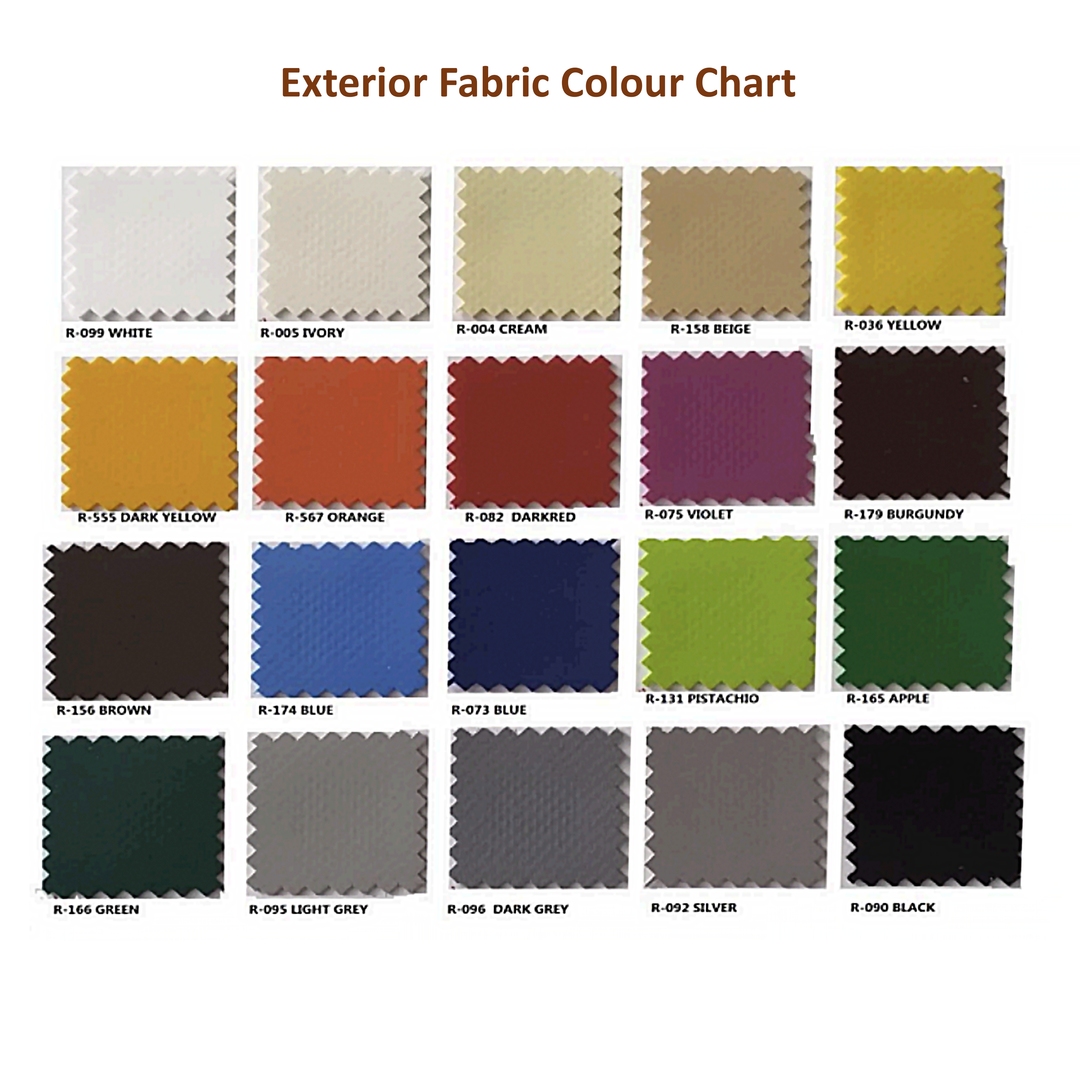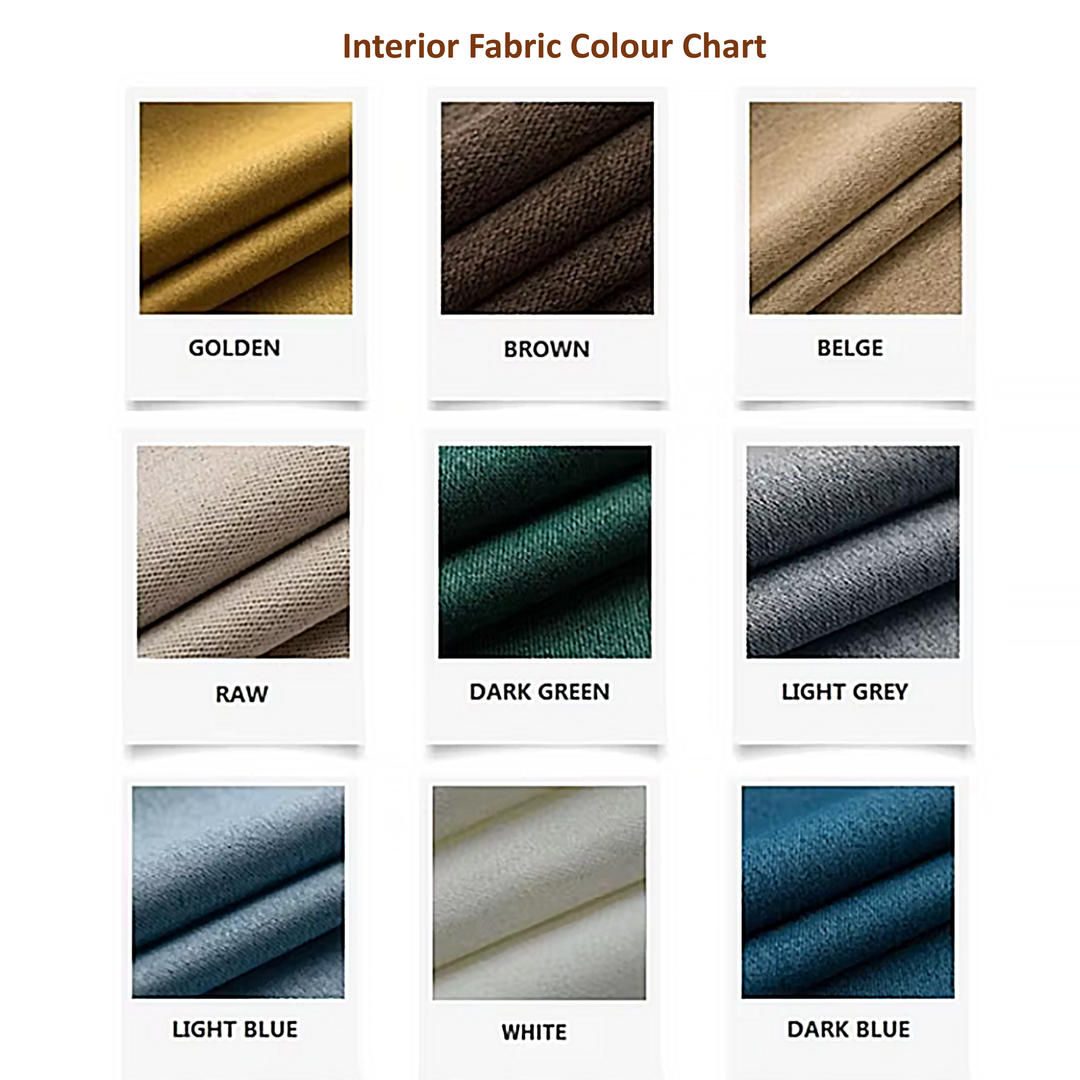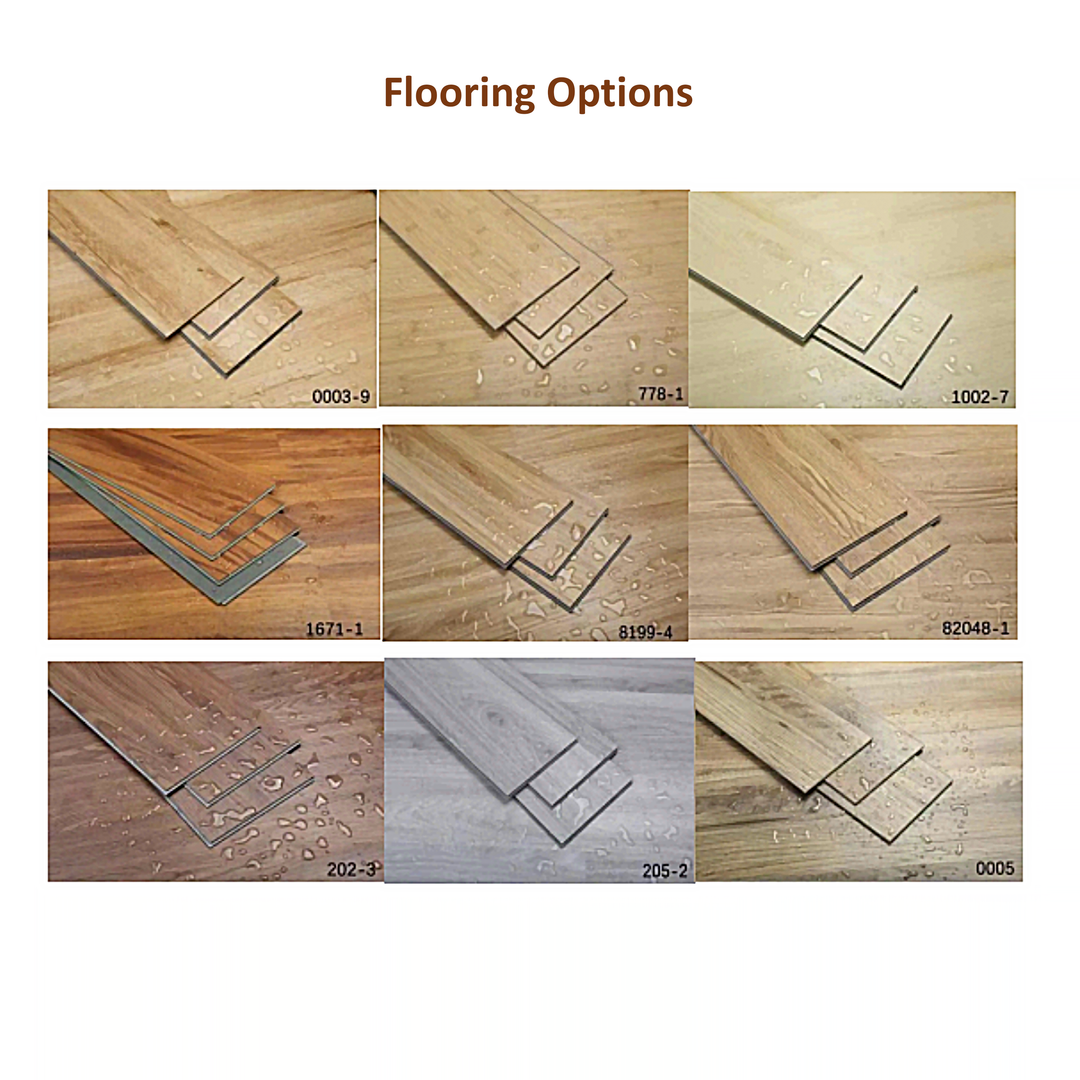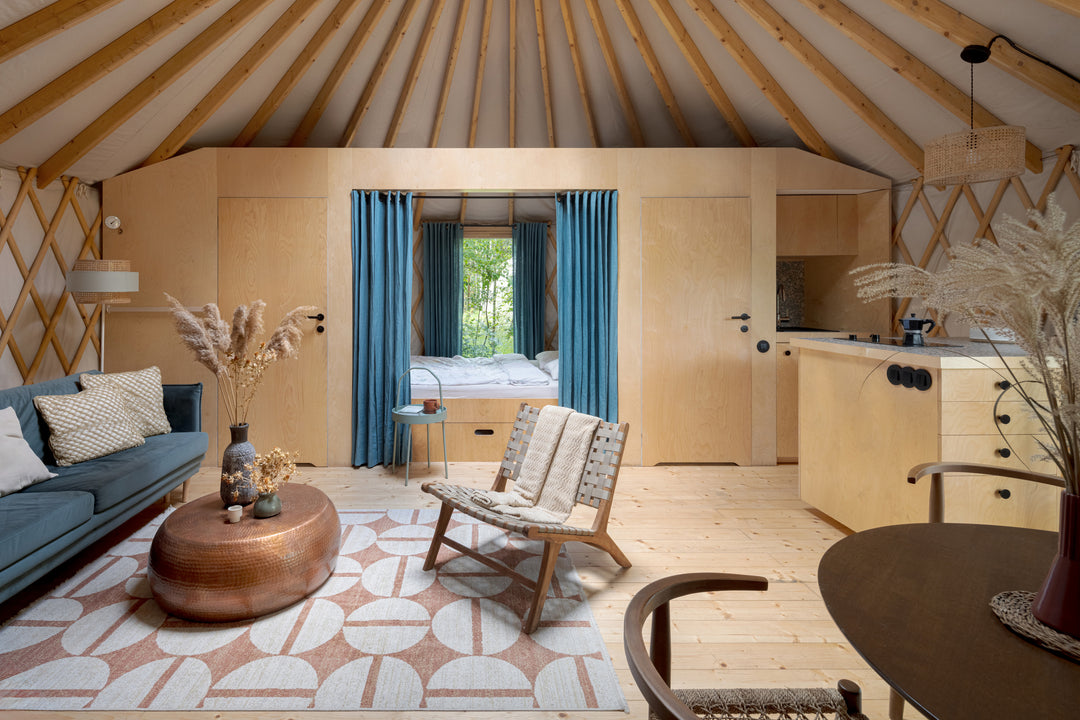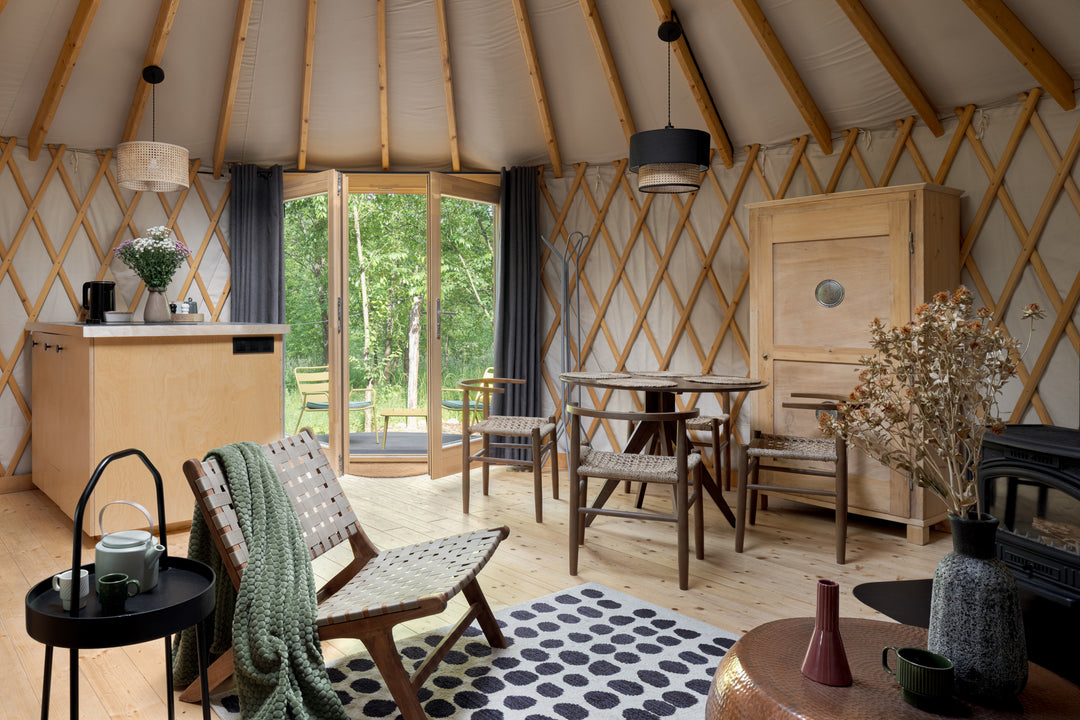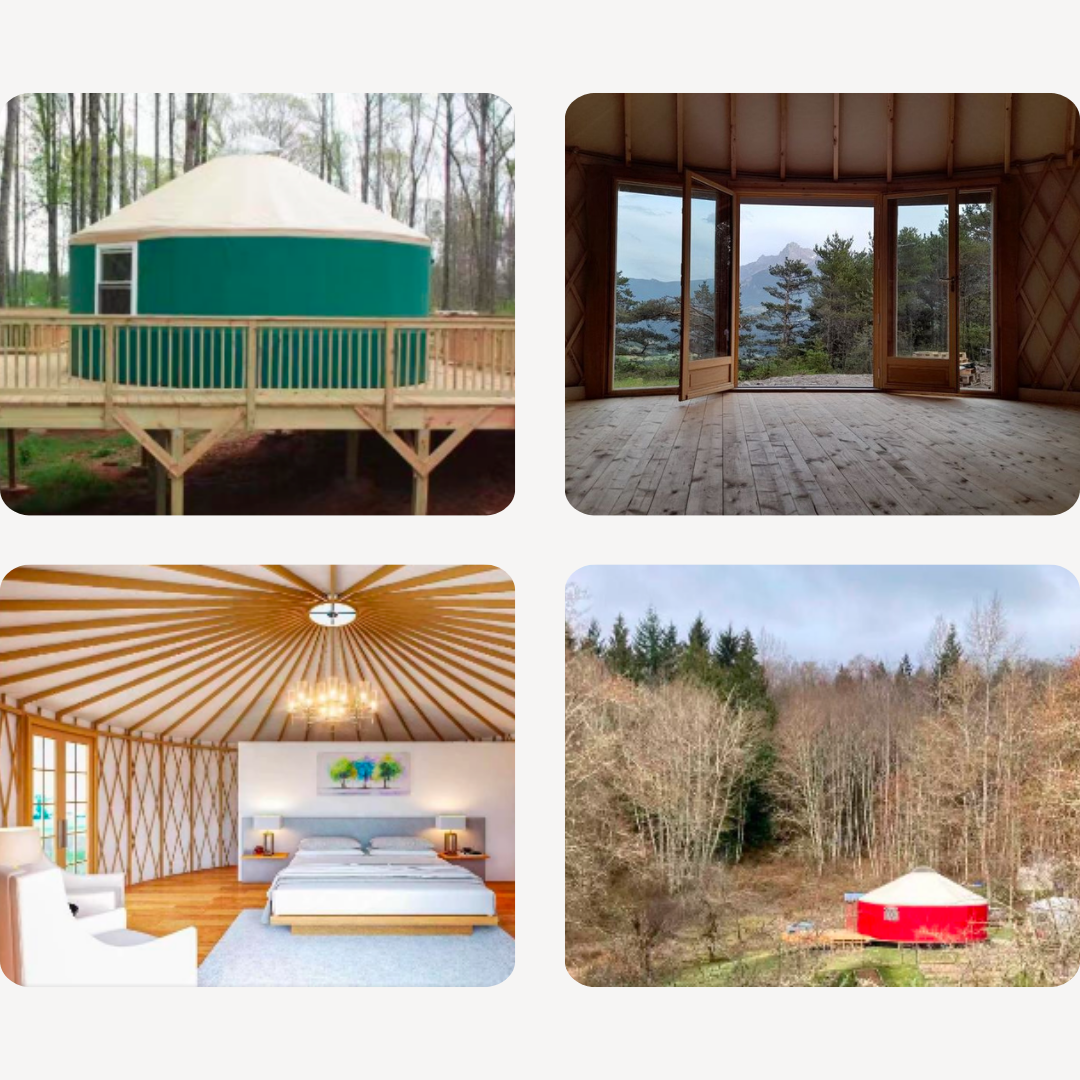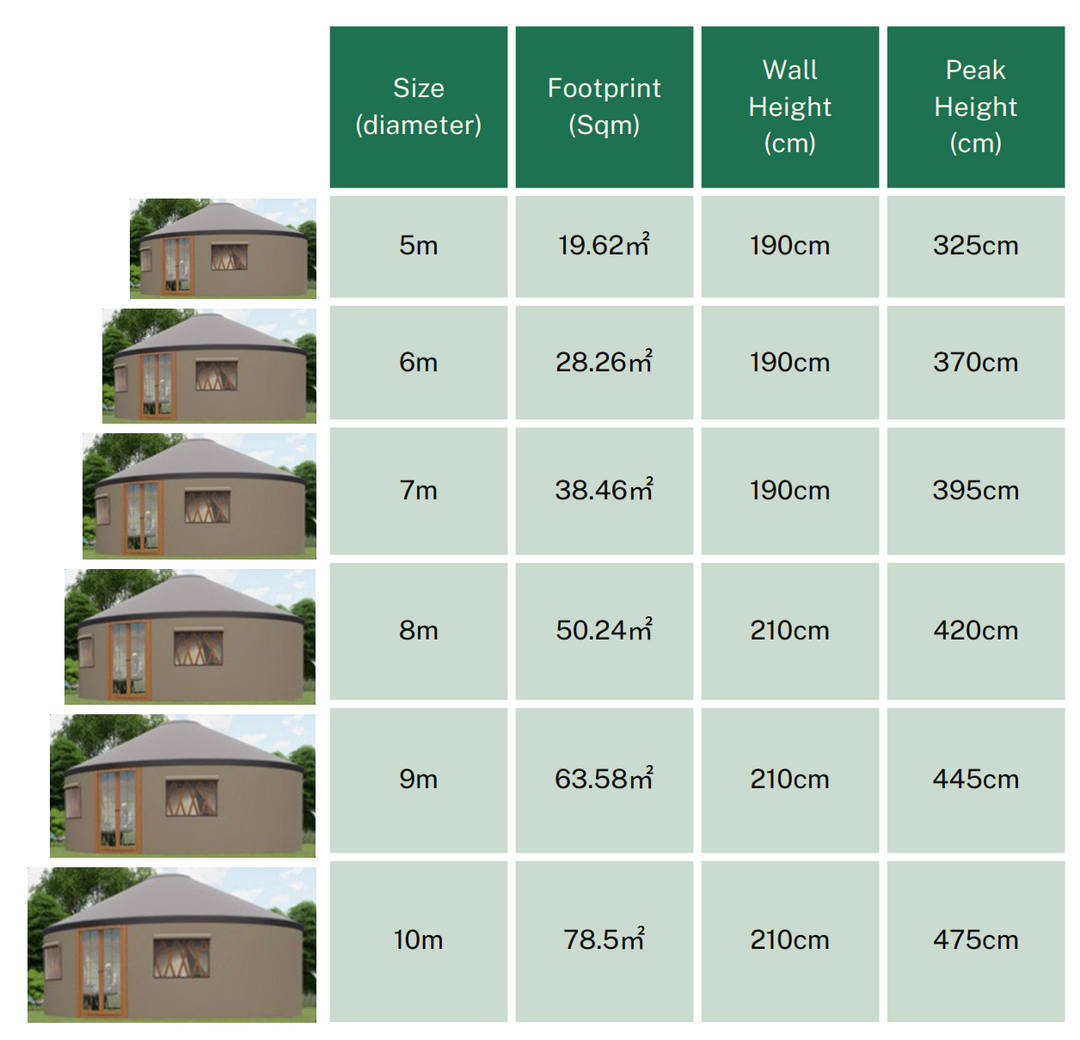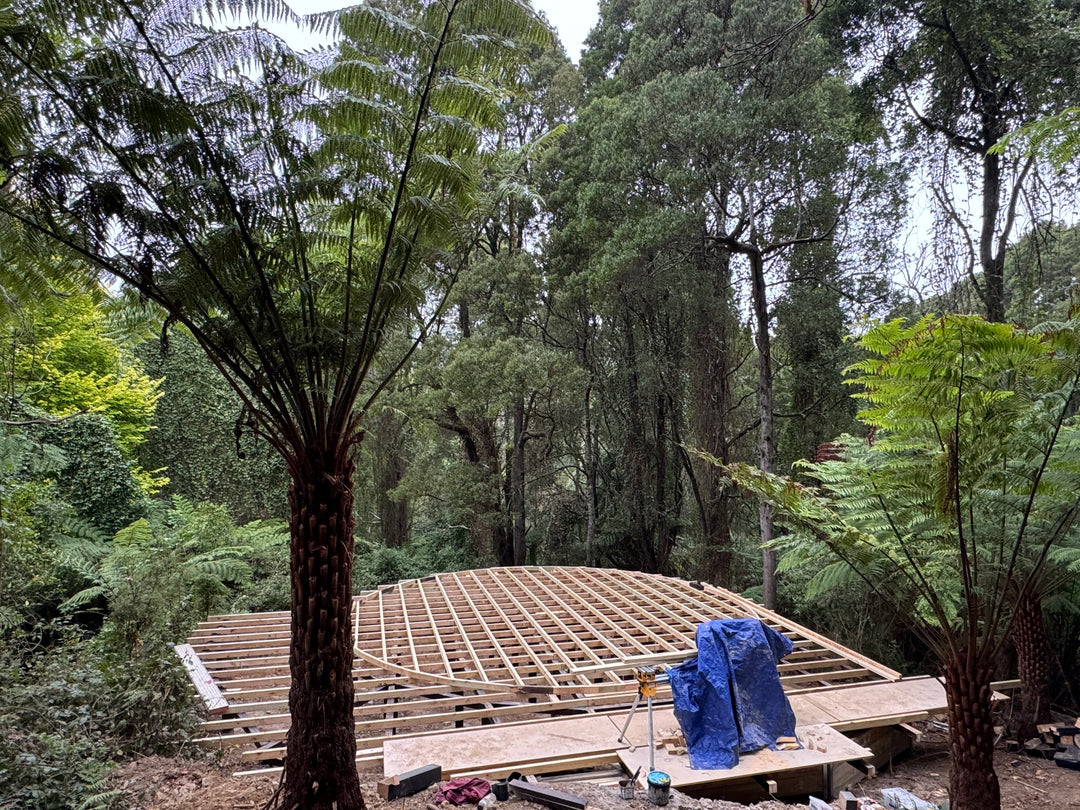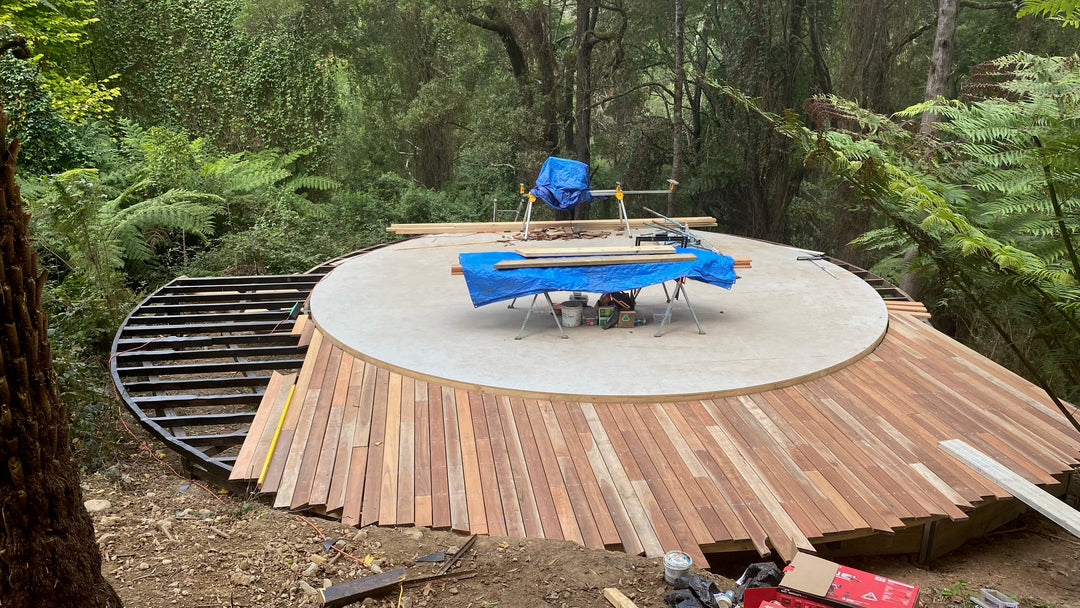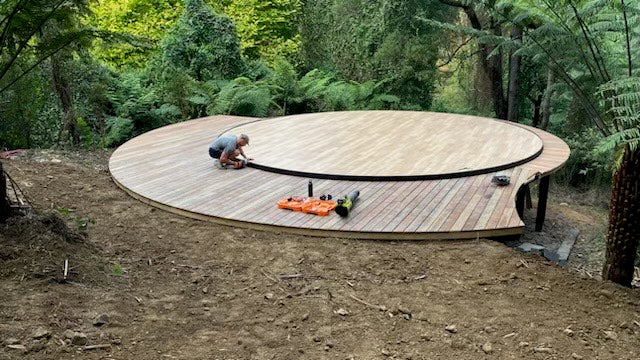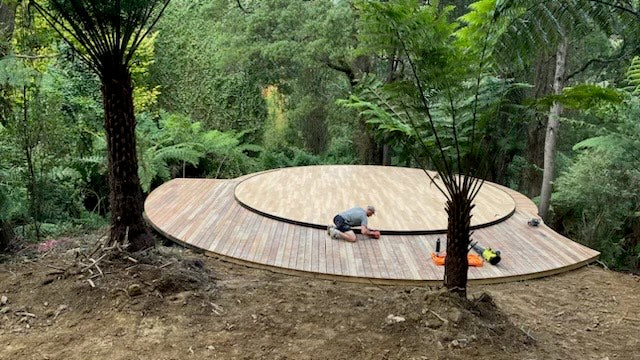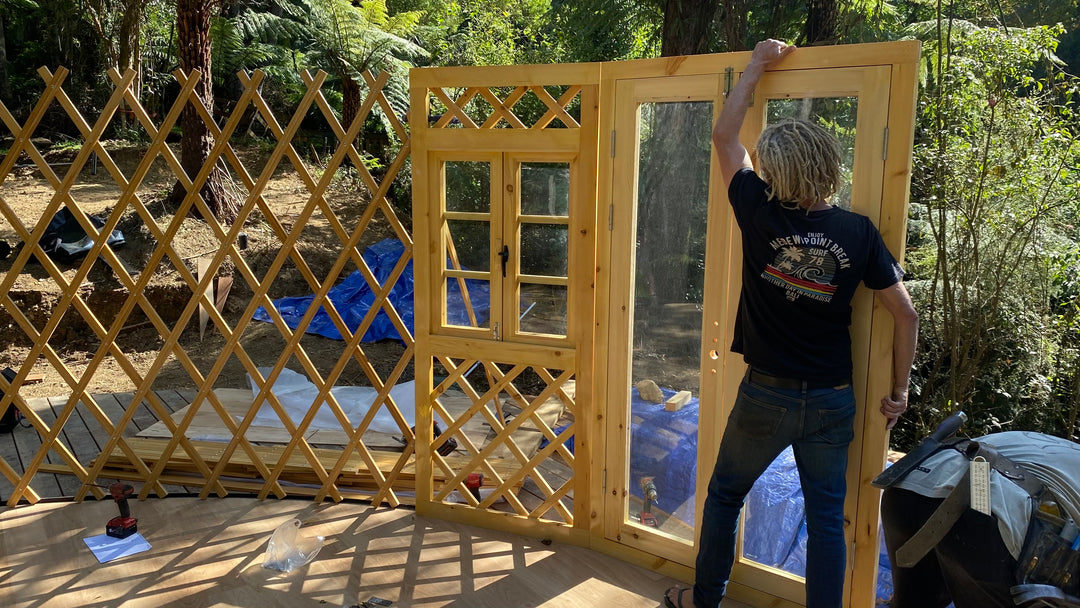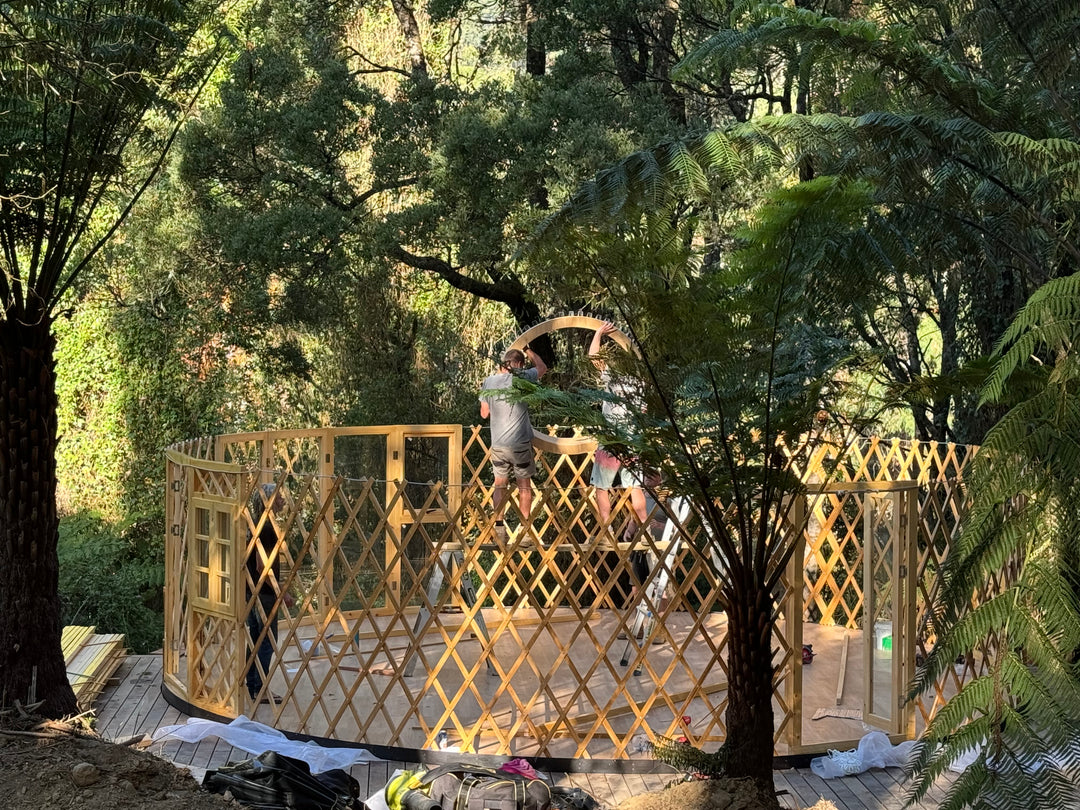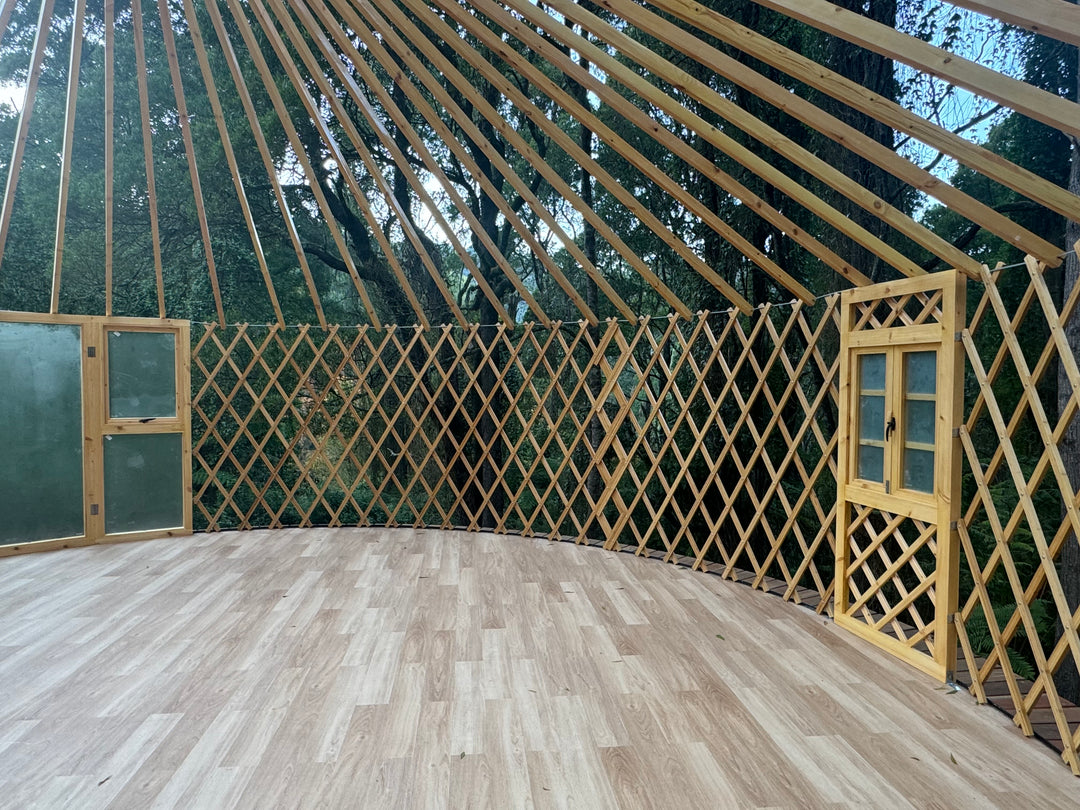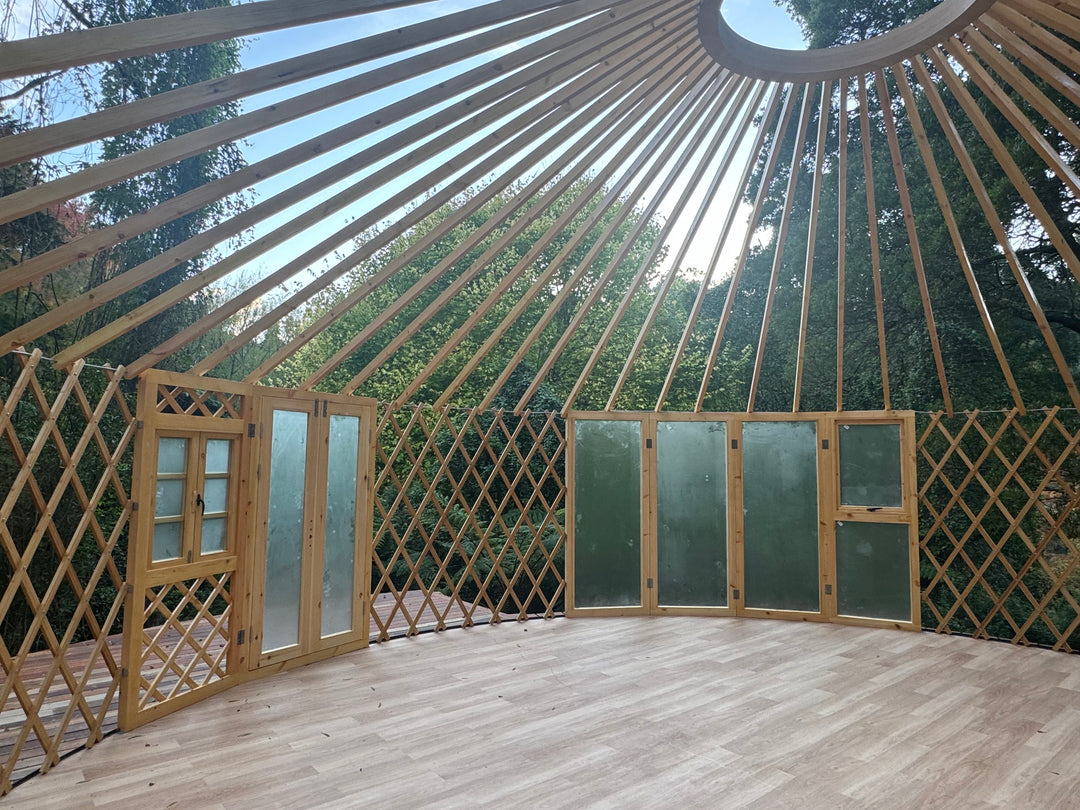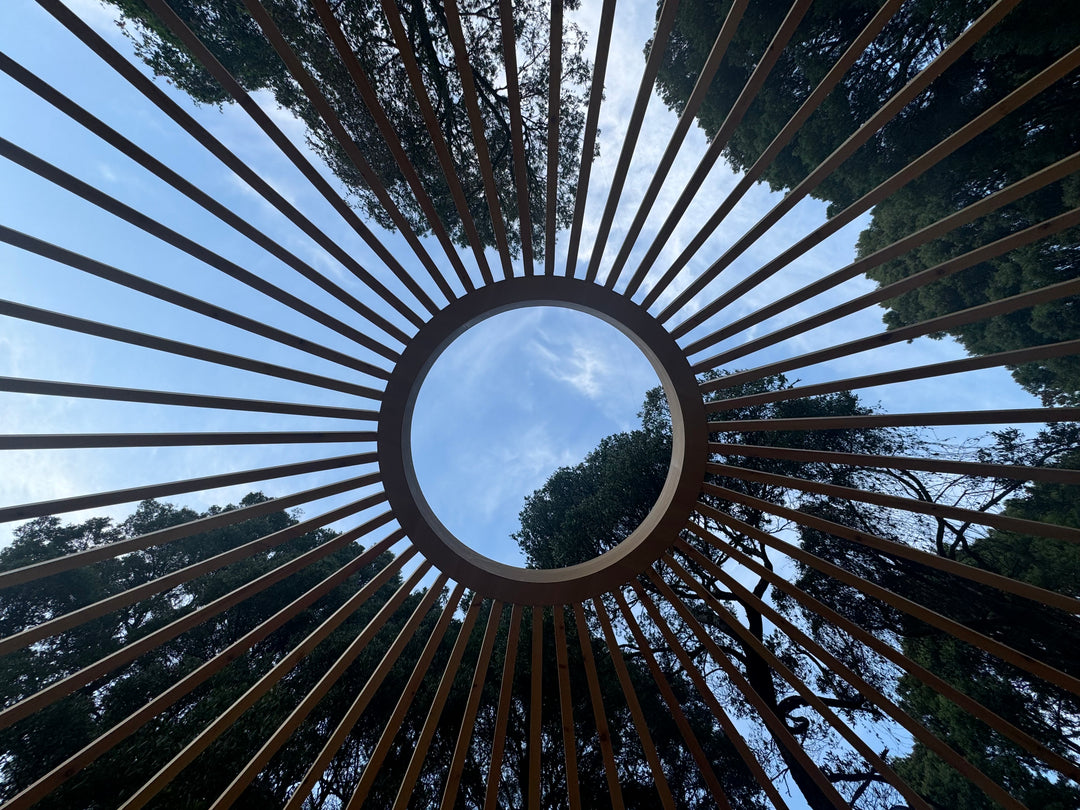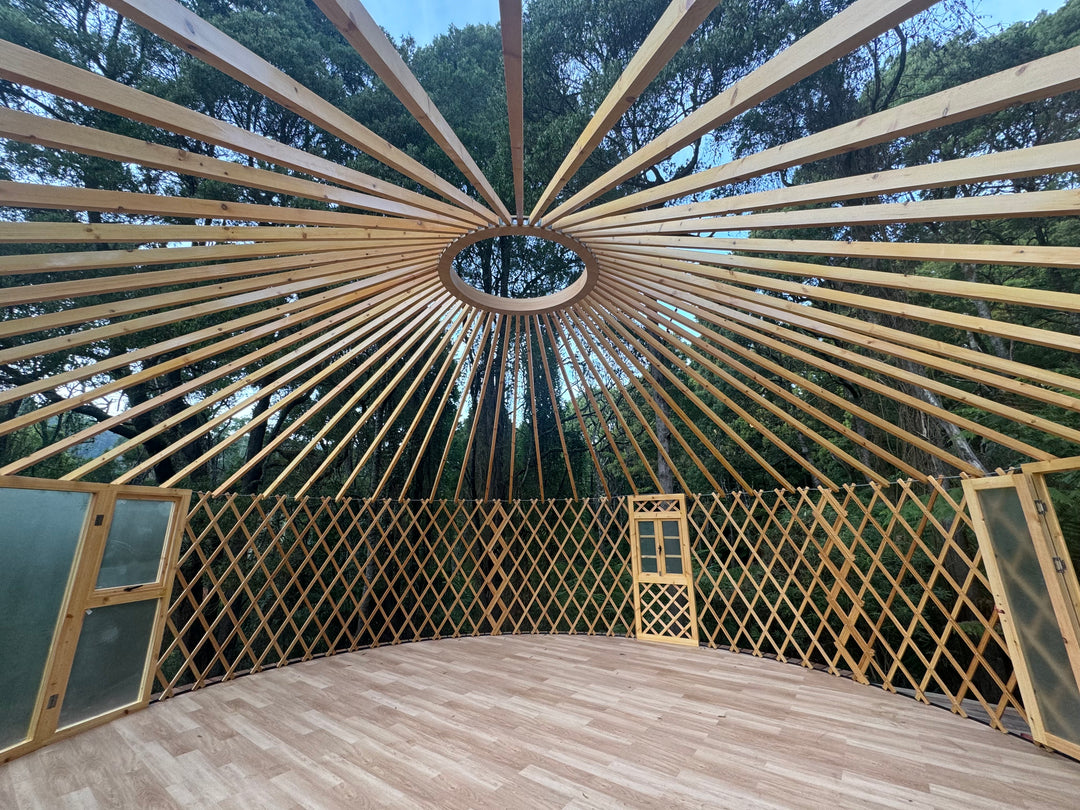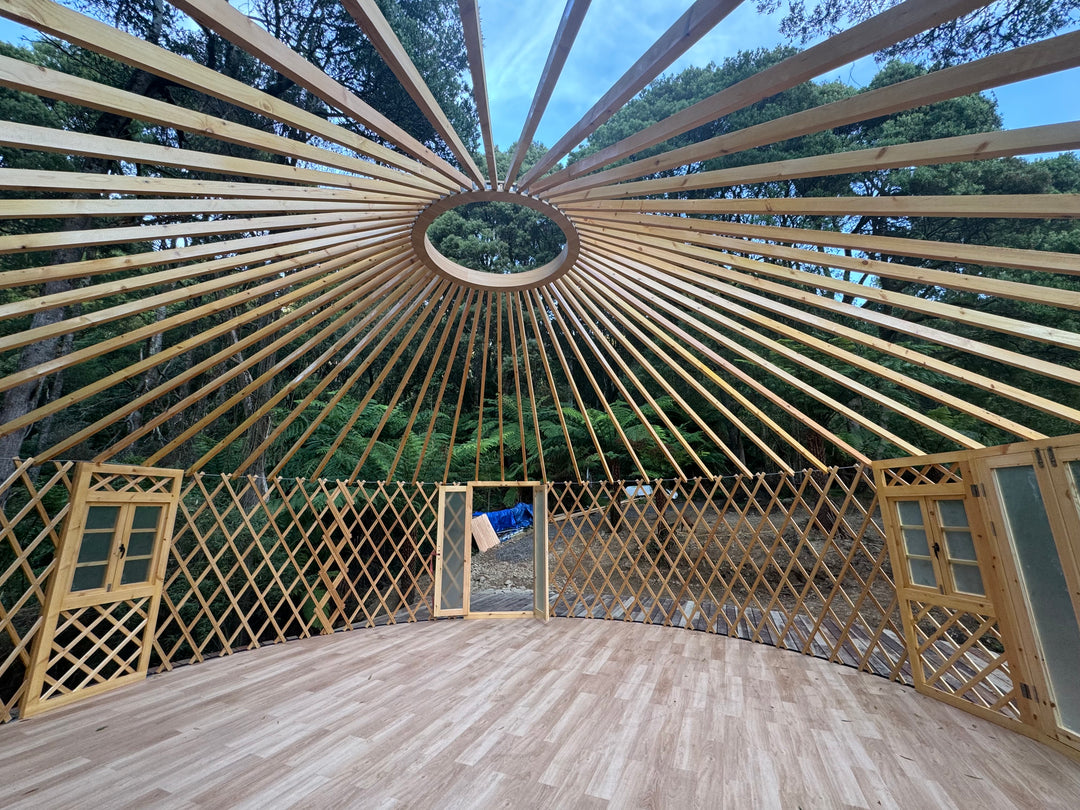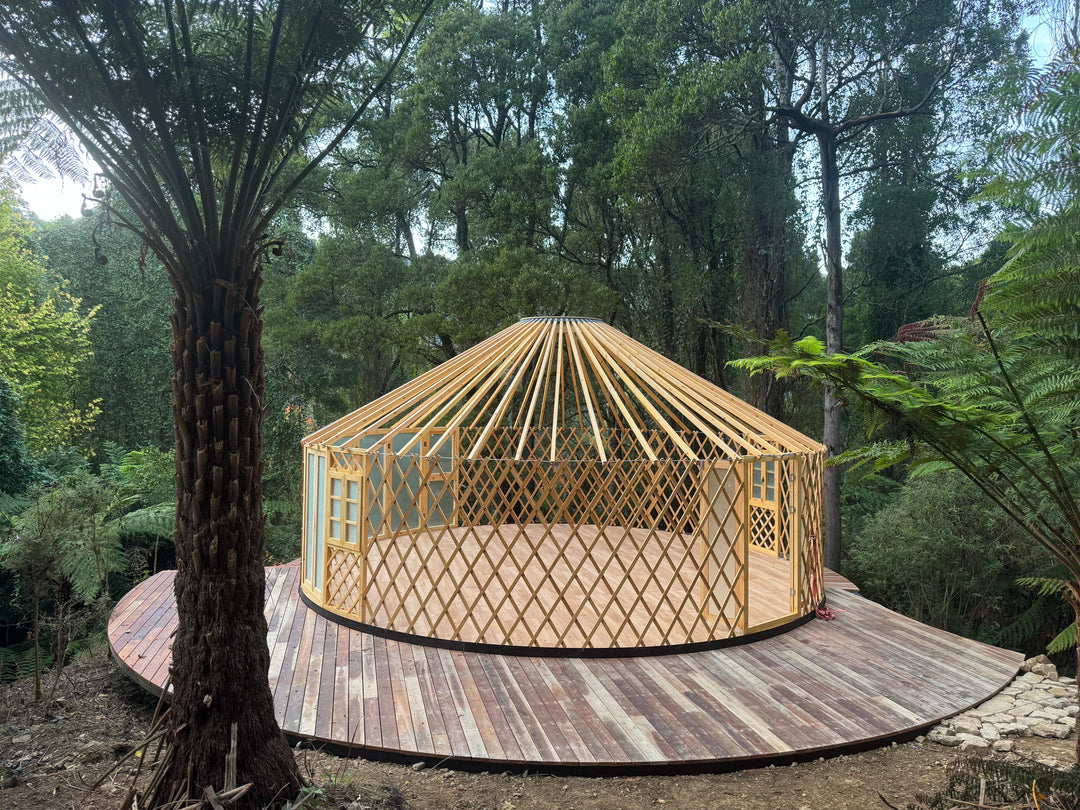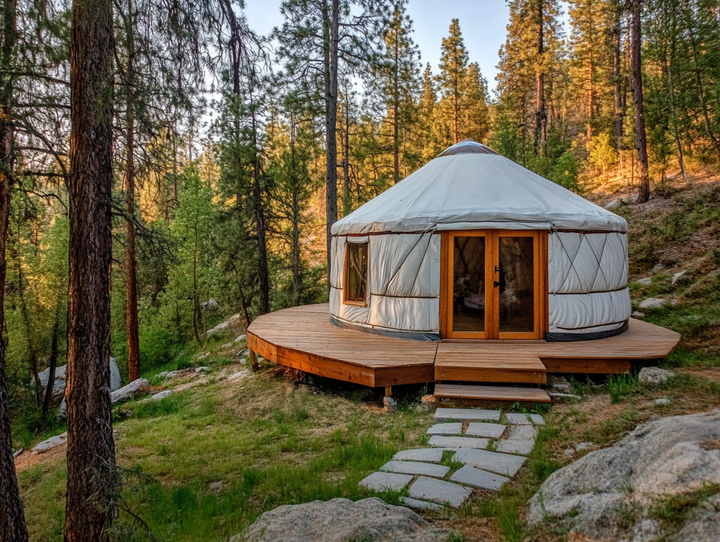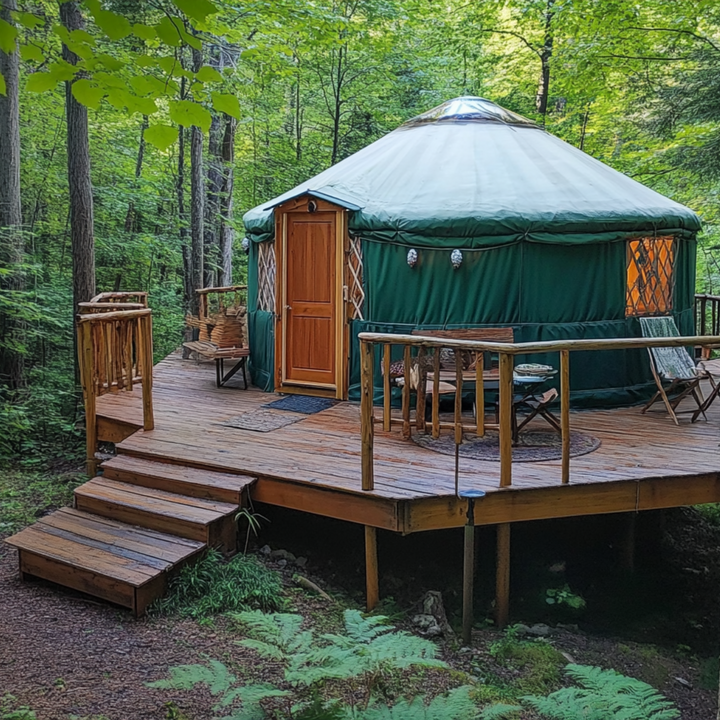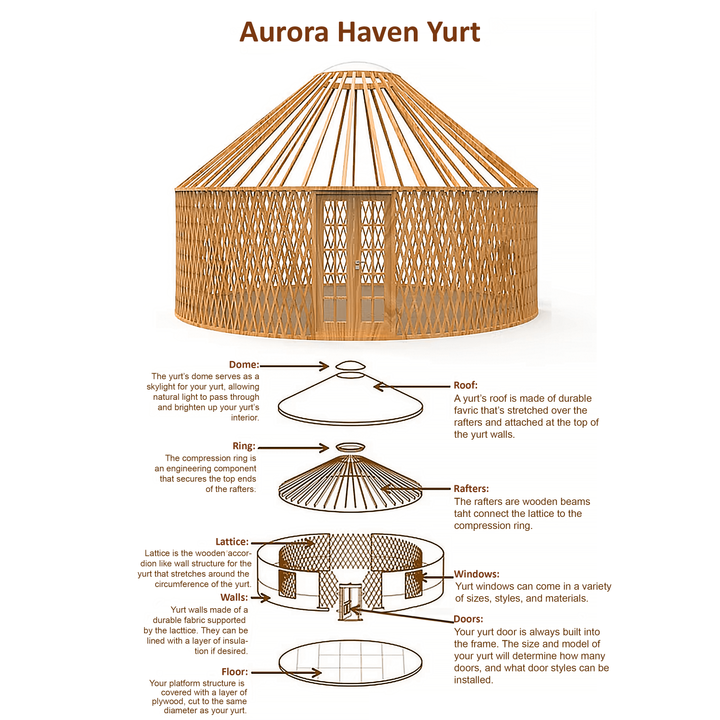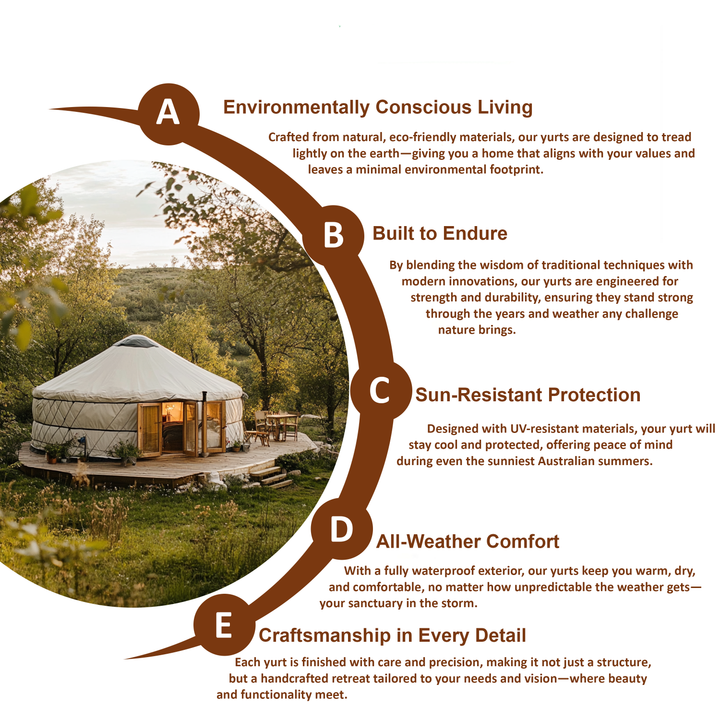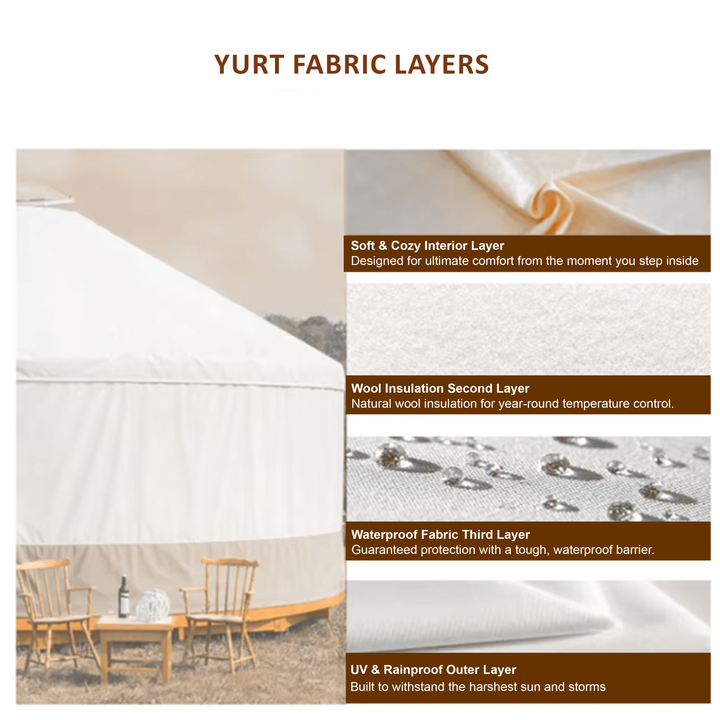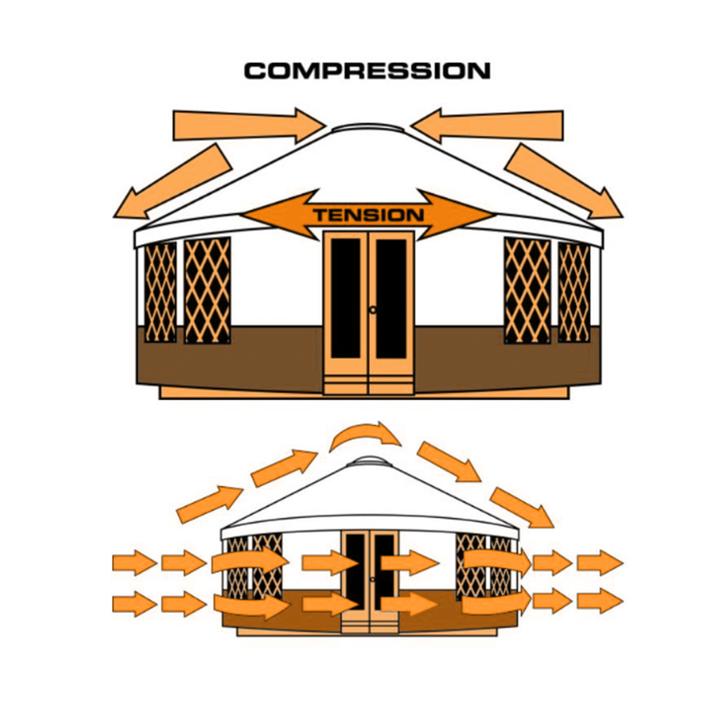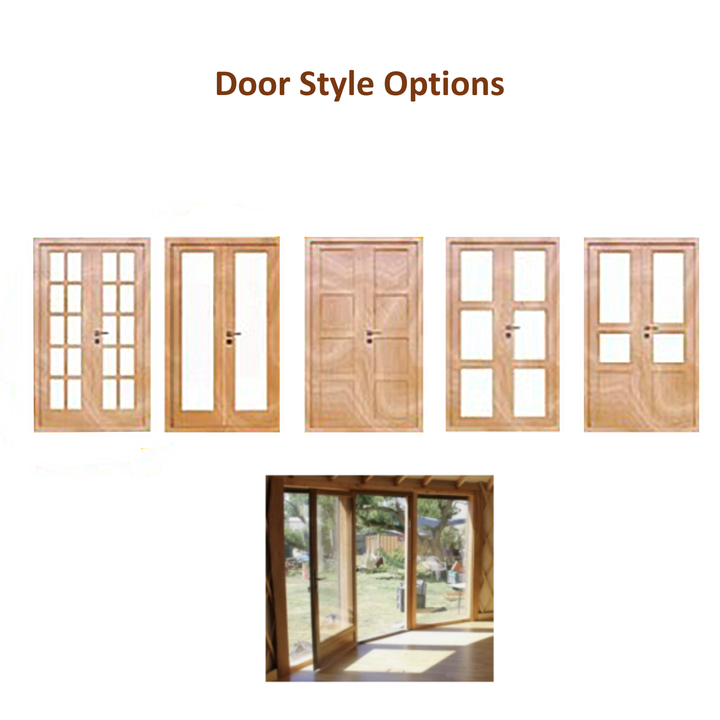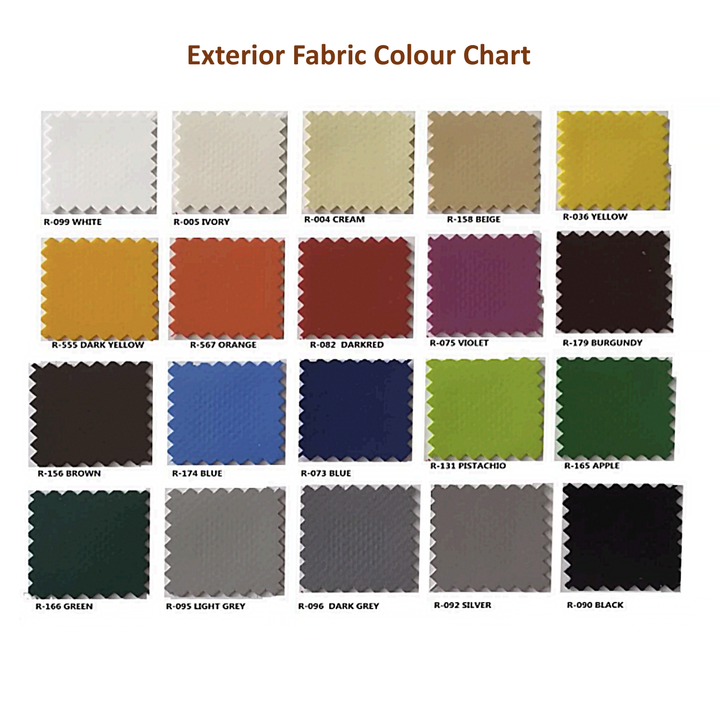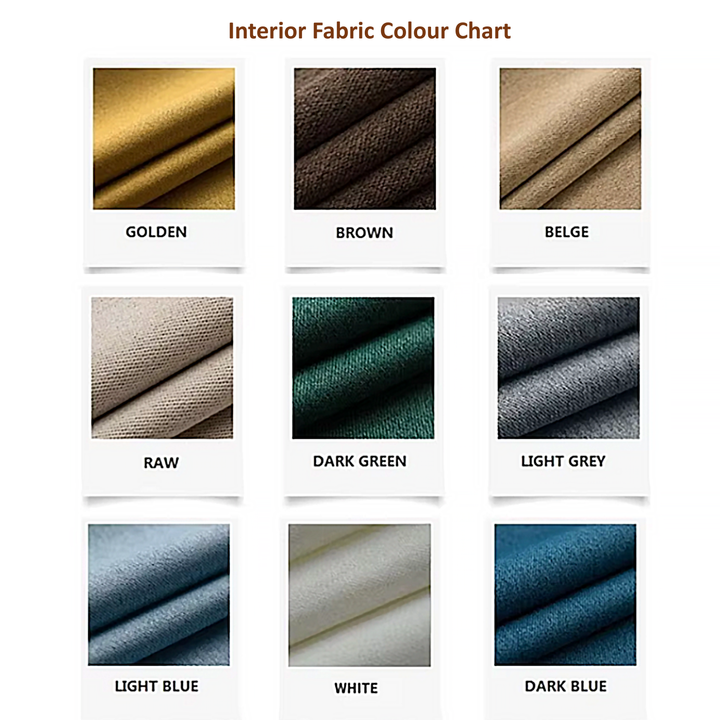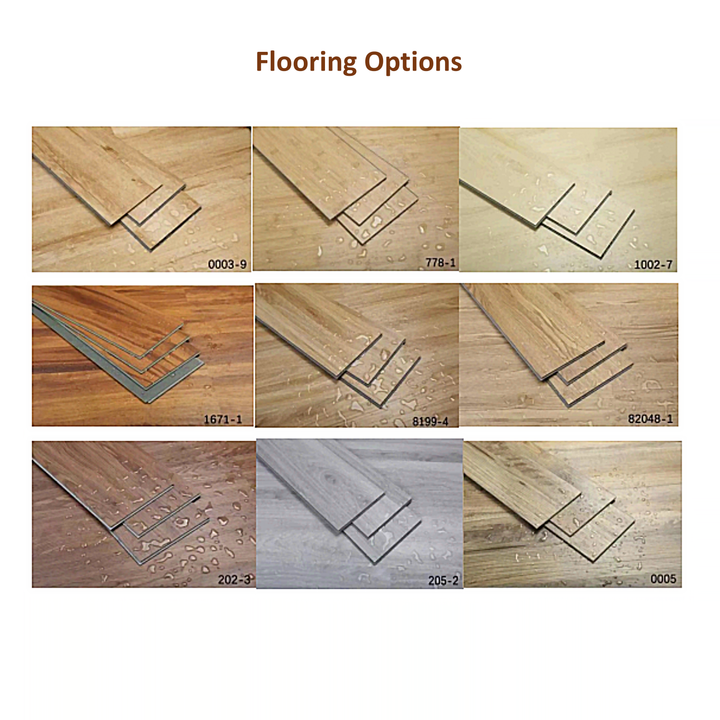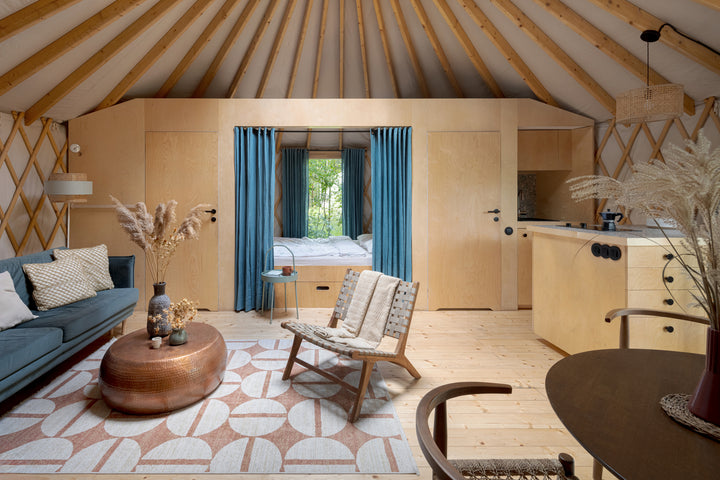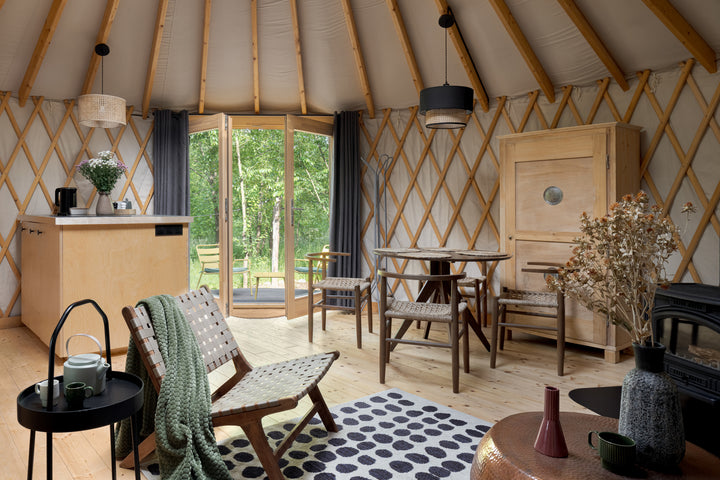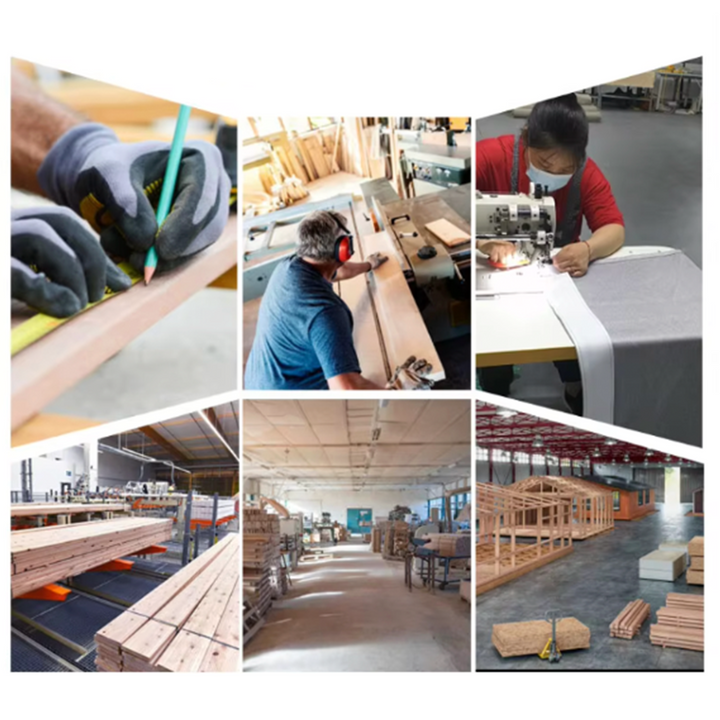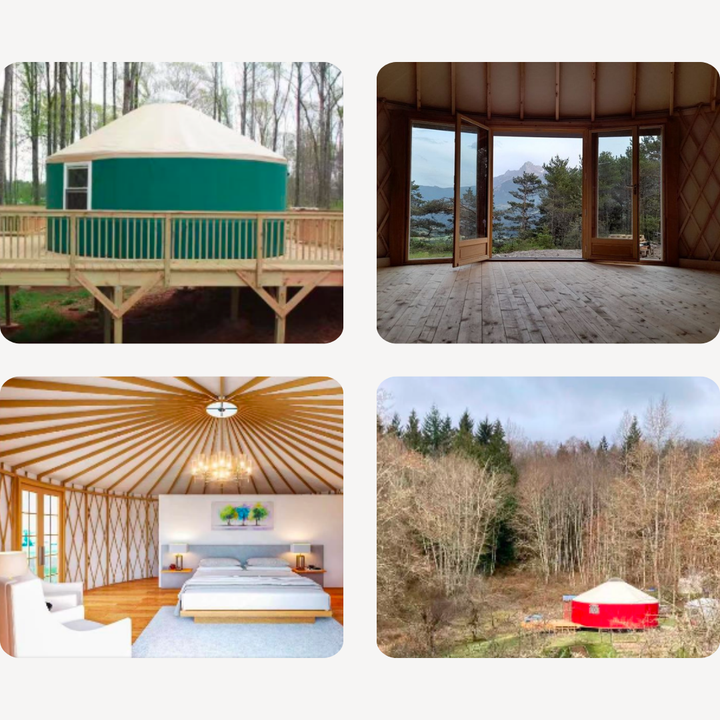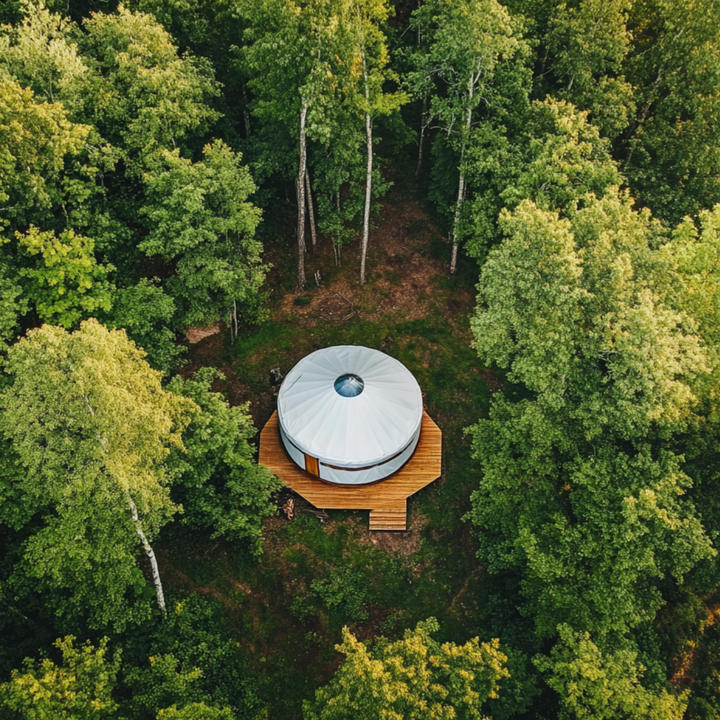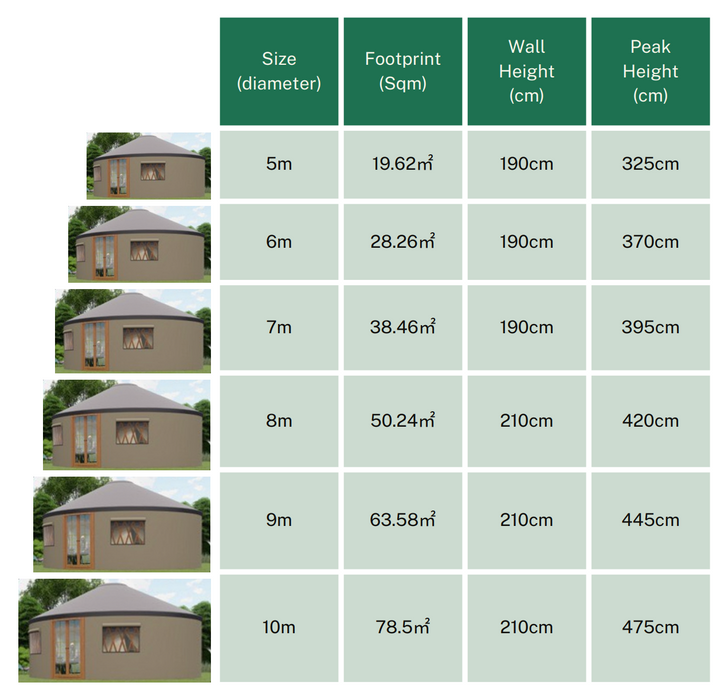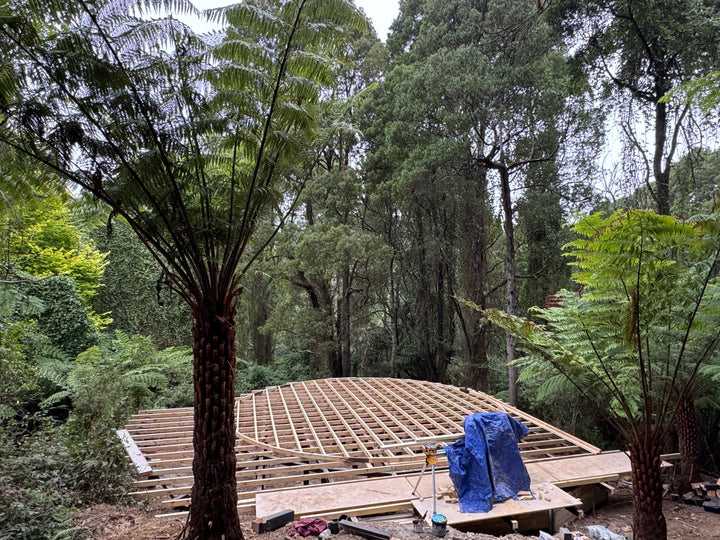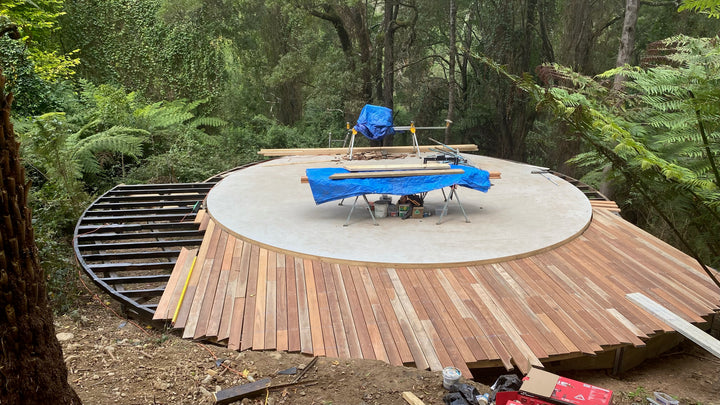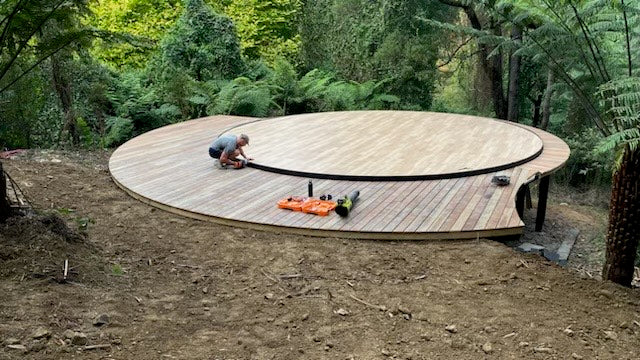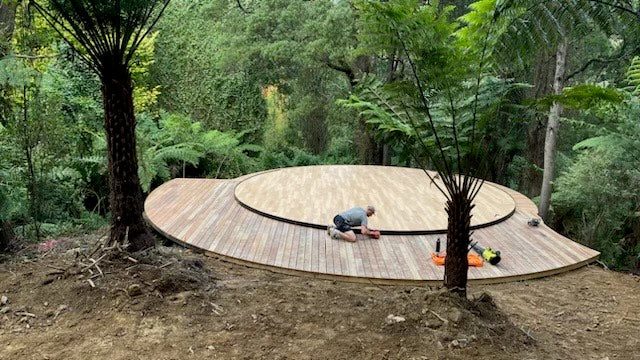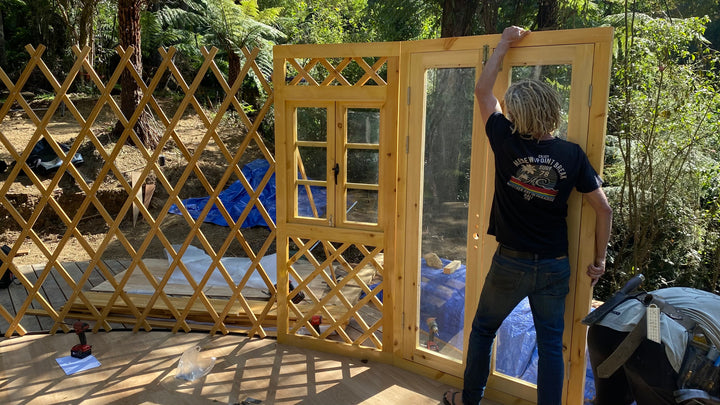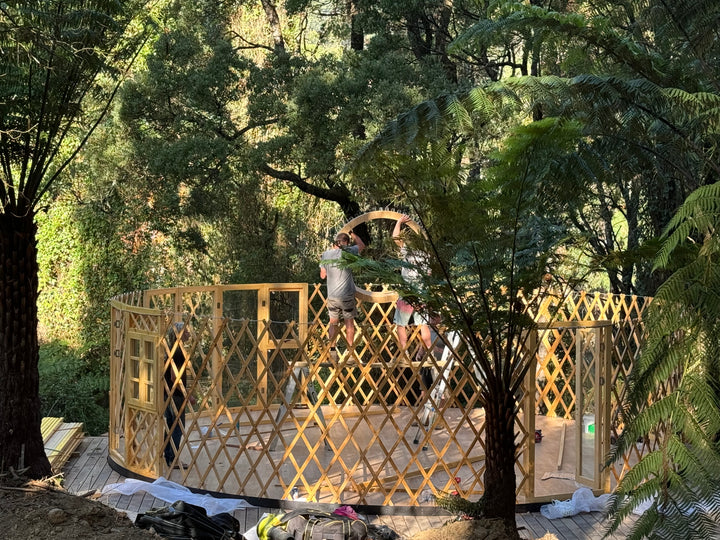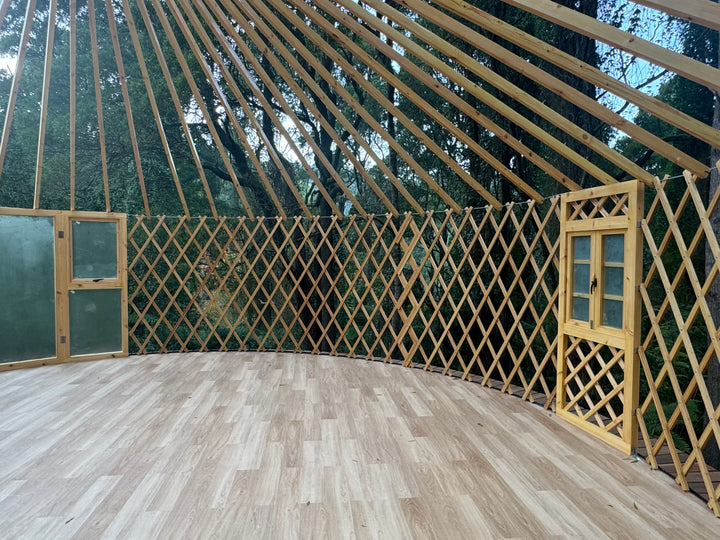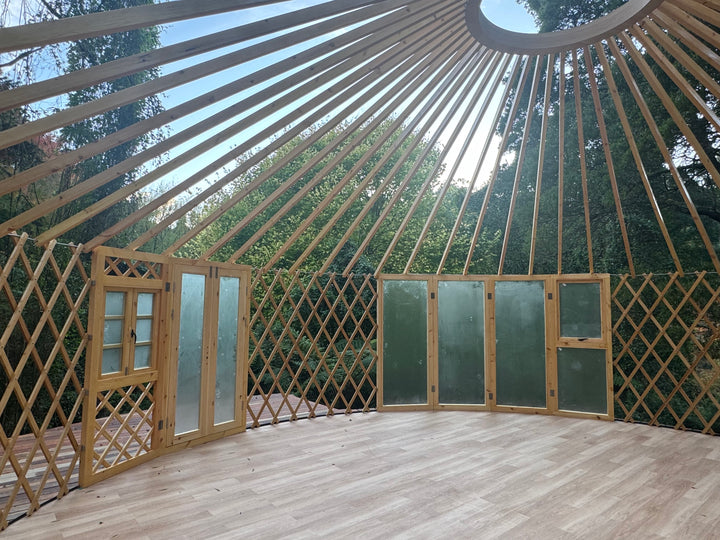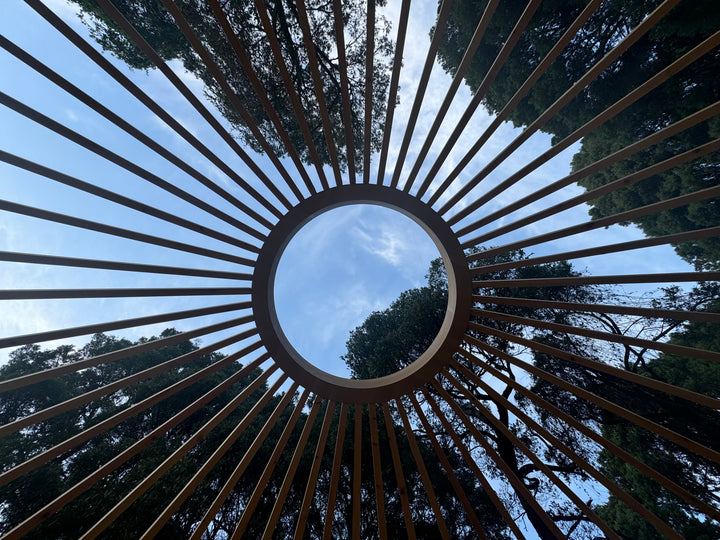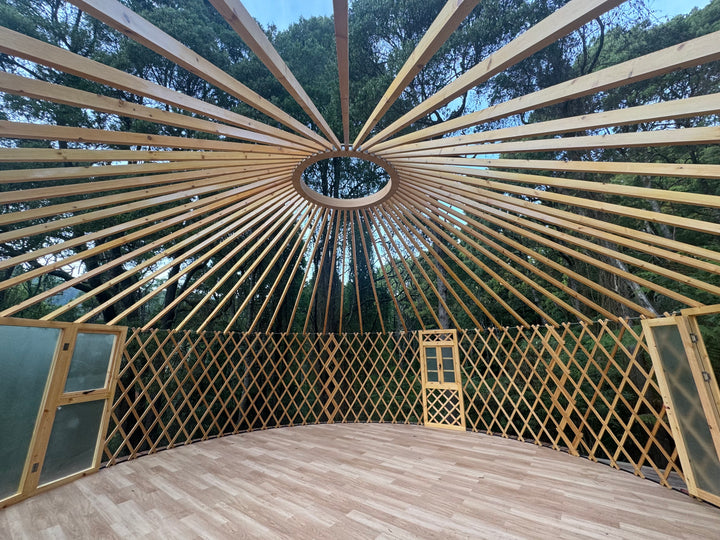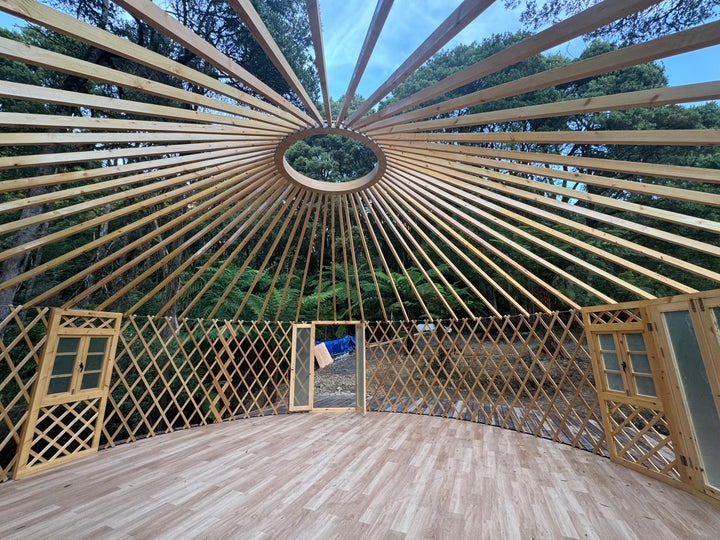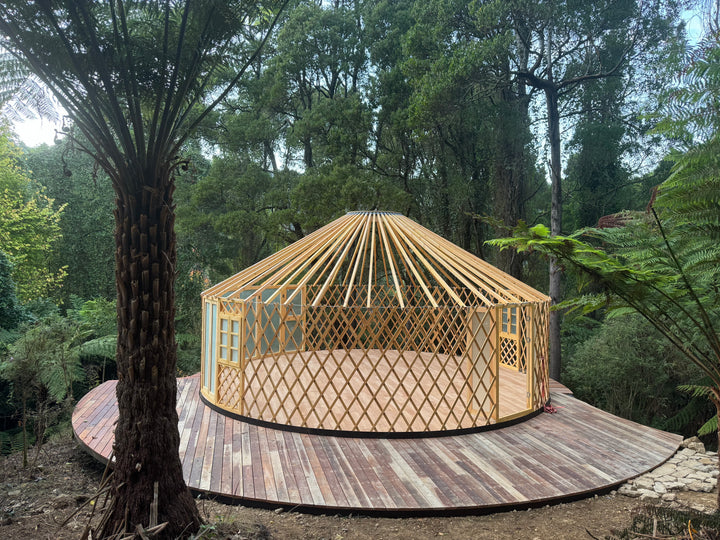Affordable Living Made Simple!
In a world where we’re often tethered to the rush and grind, our Aurora Haven Yurts offer a reset. It’s not just a shelter; it’s your escape from the noise, your return to nature, and your chance to live differently—on your terms. Read More
Yurts & Tents For Sale in Australia
Welcome to Beyond Yurt – where luxury and sustainability meet in perfect harmony. At Beyond Yurt, we believe your living space should be more than just a shelter; it should be an experience. Whether you’re searching for a serene getaway in nature, a creative workspace, or an eco-friendly housing solution, our yurts are designed to provide comfort, durability and style.
What Makes Our Yurts Unique?
Our yurts aren’t just ordinary yurts. They combine innovative design with high-quality materials to create a modern living solution that is both functional and beautiful. Every yurt tent is carefully crafted to withstand the test of time and the elements, offering you peace of mind with our industry-leading six-year warranty. Whether you’re setting up a yurt in the snowy mountains or a sunny meadow, our structures are engineered for year-round comfort and performance.
A Commitment to Sustainability
At Beyond Yurt, we’re passionate about sustainability. Our materials are responsibly sourced, and we aim to minimise our environmental footprint with every yurt we produce. By choosing a Beyond Yurt, you’re not just investing in a versatile and stunning living space—you’re contributing to a greener planet. From eco-friendly insulation to renewable energy options, our yurts in Australia are designed to align with your values.
Yurt Tents Built for Comfort and Versatility
Every Beyond Yurt offers spacious interiors and customisable features that adapt to your unique needs. Need a cozy retreat for family vacations? Or perhaps a creative studio to fuel your inspiration? Our yurt homes can transform into whatever space you envision. Plus, with easy assembly and durable components, setting up your yurt is a hassle-free experience.
Tents & Yurts Engineered for Excellence
We know how important it is to invest in a structure that lasts. That’s why Beyond Yurt is proud to offer a comprehensive six-year warranty on all our tents and yurts. This warranty reflects our confidence in the durability and craftsmanship of our products. When you choose Beyond Yurt, you’re not just buying a yurt—you’re investing in peace of mind.
Join the Yurt Tent Australia Community
Our community of yurt enthusiasts spans the globe, united by a shared passion for unique, eco-friendly living spaces. Follow us on social media to see how our customers are customising and enjoying their Beyond Yurts. Whether it’s a backyard yoga studio, a cozy guest house, or a full-time home, the possibilities are endless.
Discover how Beyond Yurt can redefine your living experience. Browse our collection, read testimonials from happy customers, or reach out to our friendly team today. We’re here to help you create the space of your dreams while supporting your sustainable lifestyle. Read Less
Is That Yurt Life For You?
- Want a unique art or yoga studio?
- Maybe an office pod for your own space?
- How about a guesthouse for extra space?
- Or a granny flat at the bottom of the garden?
- Priced out of the property market and love the idea of going against the grain?
- How about turning your backyard into an income stream with short term rentals?
But traditional building methods or renovations will set you back hundreds of thousands, not to mention the often hidden costs that creep up and extended timelines.
If any of this hits home, a Yurt could be for you!
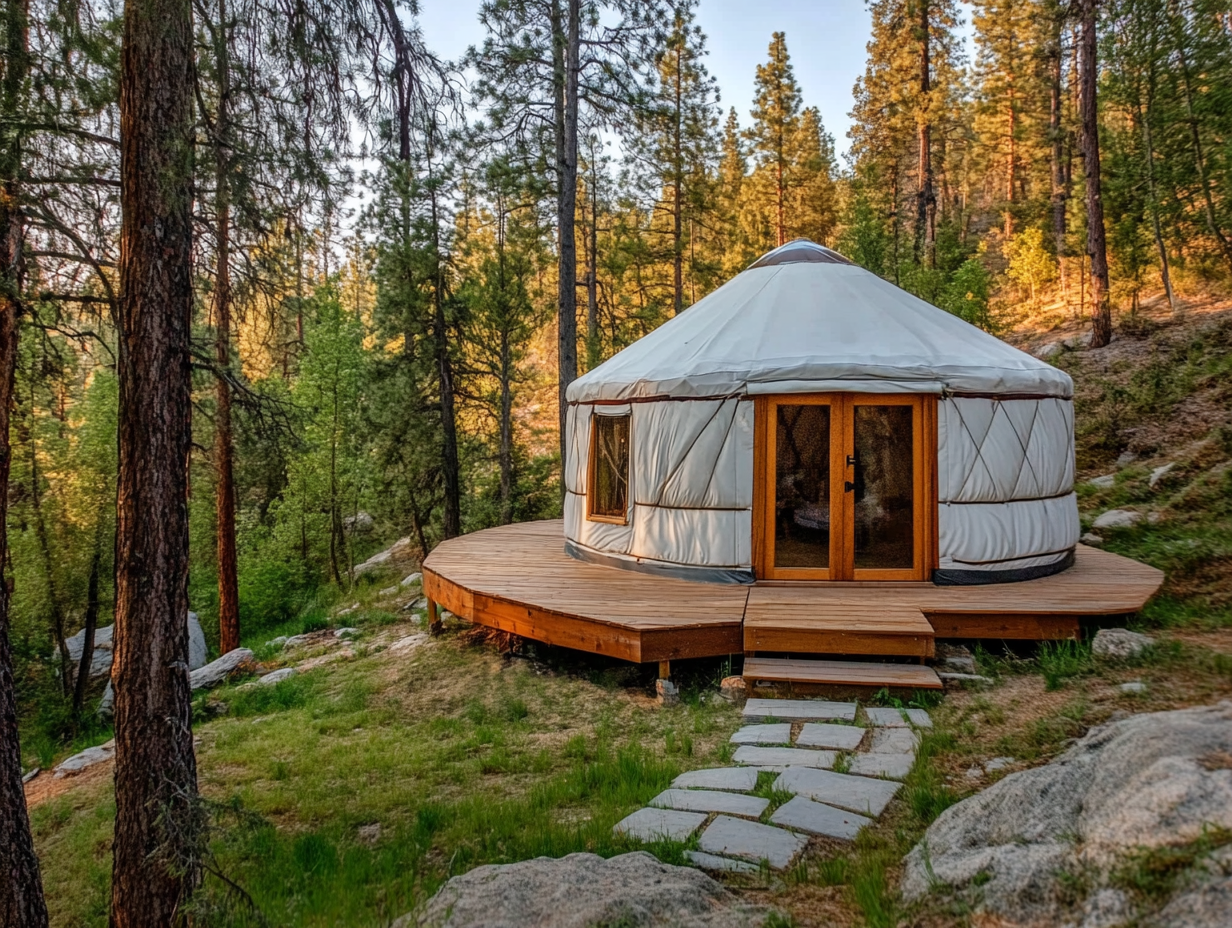
Book Your FREE 20-Min Yurt Chat Today
We'll Help You Avoid The Devastating Mistakes Made By Virtually All First Time Yurt Buyers
6-Year Warranty
At Beyond Yurt, we value the trust you place in us. That's why we've invested in top-tier manufacturing and materials to ensure the highest quality Yurts on the market. To give you complete peace of mind, we're proud to offer an industry-leading 6-year warranty on every Yurt. When you join the Beyond Yurt community, you're not just getting a Yurt—you’re getting a long-term commitment to quality and reliability.
What Our Customers Are Saying!
Frequently Asked Questions
Yurt sizing and footprint:
5m (19.6 sqm)
Wall Height - 1.9m
Dome Height - 3.3m
6m (28.2 sqm)
Wall Height - 1.9m
Dome Height - 3.7m
7m (38.4 sqm)
Wall Height - 1.9m
Dome Height - 3.95m
8m (50.2 sqm)
Wall Height - 2.2m
Dome Height - 4.2m
9m (63.6 sqm)
Wall Height - 2.2m
Dome Height - 4.45m
10m (78.5 sqm)
Wall Height - 2.2m
Dome Height - 4.75m
12m (113 sqm)
Wall Height - 2.4m
Dome Height - 5.2m
We can build larger if need be. Get in touch to discuss a custom size.
Here are some quick pros and cons of Yurts and Geo Domes:
Geo Domes:
Pros:
- Futuristic, dramatic look, a little sci-fi even (could be a pro, or con, as it's not for everyone)
- Strong Instagram / marketing appeal (if it's your vibe)
- Good space and size options
Cons:
- Typically all metal structure; less warm and uninviting
- Polarising style — not ideal for eco-tourists (a rapidly growing segment)
- Less eco-friendly materials
- Often plastic windows instead glass
- Complex to build; slower, slightly trickier set up
Yurts:
Pros:
- Deep historical roots — rich guest experience
- Solid wood frames = natural, sustainable, beautiful
- All our windows and doors are solid wood frame and real glass
- Eco-tourist magnet (a booming, high-spend market)
- Strong weather resistance (built for wild climates)
- Magical light and atmosphere (skylights, shadows, immersion)
- Faster setup and assembly times (only 2 to 4 days once on site)
- Premium nightly rates + higher occupancy potential on Airbnb
- Long lifespan with minimal maintenance
Cons:
- Some learning curve to setting up, if DIY (although less than geo-domes, plus we guide you every step of the way)
- You'll need to organise your base for the yurt to sit on, same as a geo dome (we do offer a fully insulated modular base if needed for ease)
Yes! Our modern yurts offer interior and exterior color options, as well as different door and window options too. It's important that we set your yurt up perfectly for your location/site. Every site is different, so we need to be able to adapt our yurts to match your vision and location.
Want huge curved glass windows to frame your perfect view? We've got you covered. Beautiful floor to ceiling windows to let in that fresh air… Done! French doors or our 3m glass combo doors for a grand entrance and a tonne of natural light, you choose.
Your Yurt Kit:
Our yurt kits are designed for a complete and straightforward build, arriving with everything you need:
- Full Yurt Structure: This includes the robust frame, durable outer cover, and all necessary hardware.
- Windows & Doors: Your kit comes complete with the selected windows and doors.
- Insulation: High-performance insulation is included to ensure comfort.
What You'll Need to Arrange Separately:
- Foundation/Platform: You will need to prepare your yurt's foundation or platform independently. Don't worry, we can provide you with assistance on this if needed. We also offer a fully insulated modular base as an option for ease and speed on site.
Shipping & Delivery:
- Shipping to Major Australian Ports is Included: Prices cover shipping to the main ports of Perth, Melbourne, Sydney, Brisbane, and Adelaide.
- Final Delivery: Delivery from the port to your site is not included, but we can arrange this for you at an additional cost, or you can opt to collect your kit directly from the port warehouse.
Why settle for average? Your investment is protected by our exceptional 6-year warranty, offering twice the industry standard coverage! This extended assurance reflects our deep confidence in the robust quality and meticulous craftsmanship built into every single yurt we create.
Our warranty of course excludes:
- Normal wear and tear
- Damage from extreme weather events (fire, flood, storm)
- Third-party modifications or repairs
- Improper setup, misuse, or neglect
You need a level, stable platform. Common options include:
- Timber bases and decks (most popular)
- Concrete slabs
We can discuss what option is best for you and your site, feel free to book in a quick 20-min yurt chat with us and we can run through the finer details.
You will typically need:
- Drill/impact driver with bits
- Socket set and spanners
- Tape measure
- Circular saw for flooring
- Sharp scissors
- Spirit level
- Hammer
- Heavy duty stapler
- Pencil or marker
- Silicone sealant and caulking gun
- Ladder or scaffold (depending on model size)
Detailed tool lists are included in your instruction manual.
Council regulations regarding yurts can differ significantly depending on your specific local authority. While many councils may categorise yurts as temporary structures, potentially exempting them from certain approvals, this classification isn't universal or guaranteed.
Key Considerations:
- Foundations/Platforms: Even if a yurt itself doesn't require a permit, the deck or platform it sits on often does.
- Tourism Business Assistance: We have valuable experience assisting tourism businesses in navigating the approval process for their yurt installations.
- Australian Building Standards: Currently, yurts don't meet Australian Building Standards required for permanent residential homes.
- Location-Based Restrictions: Properties in rural or off-grid settings typically encounter fewer building and planning restrictions.
Get in touch if you'd like us to send you more information on council approval. We've worked with many customers that have gotten council approval. Your wording and your approach makes a big difference.
At Beyond Yurt, we blend passion with innovation to offer you a truly exceptional experience. Here's why our yurts stand out:
- Modern Twist on a Timeless Design: We've reimagined the traditional Mongolian yurt, infusing it with a modern aesthetic that respects its nomadic heritage while offering all the creature comforts you desire. We're deeply passionate about the off-grid lifestyle and believe in creating spaces that enhance it.
- Uncompromised Quality & Craftsmanship: We pride ourselves on using only the finest materials. Unlike many alternatives, our yurt frames, doors, and windows are crafted from real wood and feature genuine glass panes. This means no plastic windows to spoil your view and no distracting lattice running through your outlook. Our customers consistently rave about the beauty and superior craftsmanship evident in every detail.
- Built from Experience: Our journey began from personal experience living in yurts across the US, Australia, and New Zealand. We've taken all the things we loved, and crucially, improved upon everything we didn't, to design yurts perfect for Airbnb, glamping, or comfortable long-term living.
- World-Class Support: Your journey with Beyond Yurt doesn't end after purchase. We're committed to providing world-class ongoing support, ensuring you have assistance whenever you need it.
Choose Beyond Yurt for a structure that offers unparalleled beauty, durability, and a genuine connection to nature, all while providing the modern comforts you deserve.




